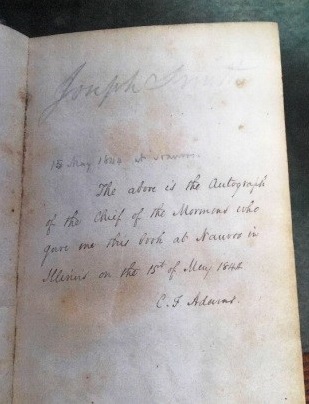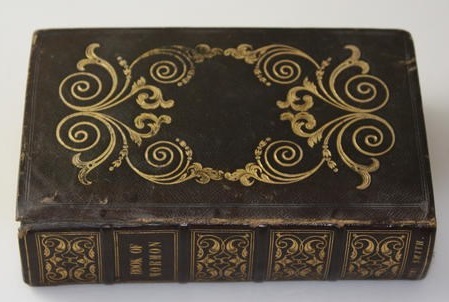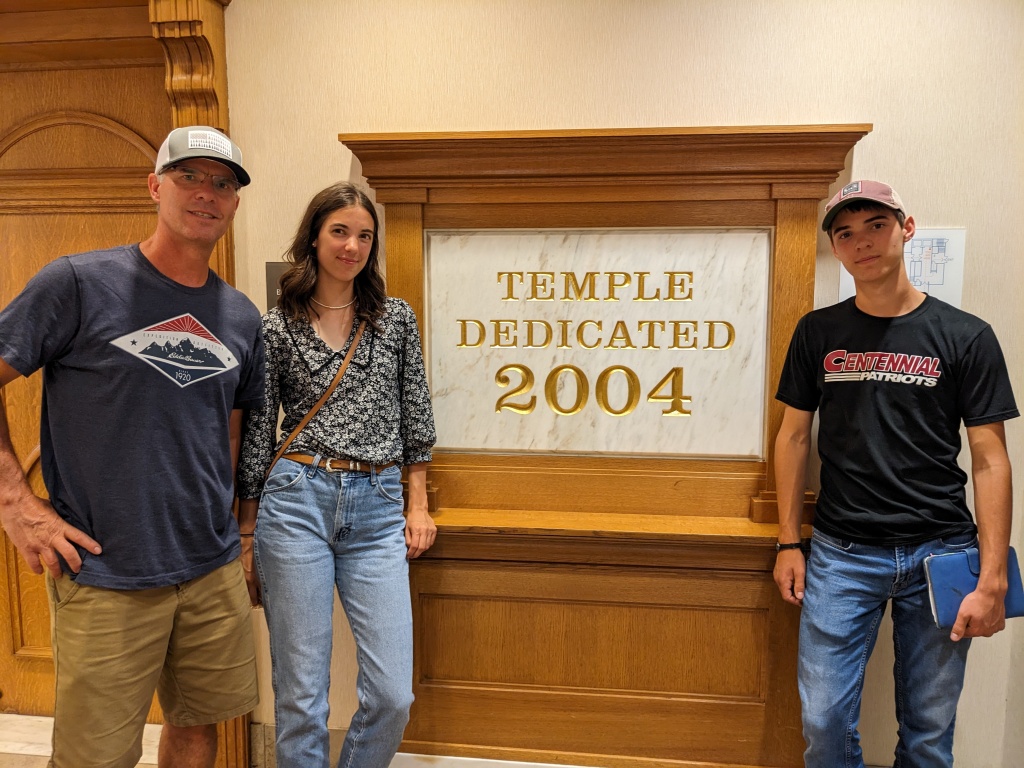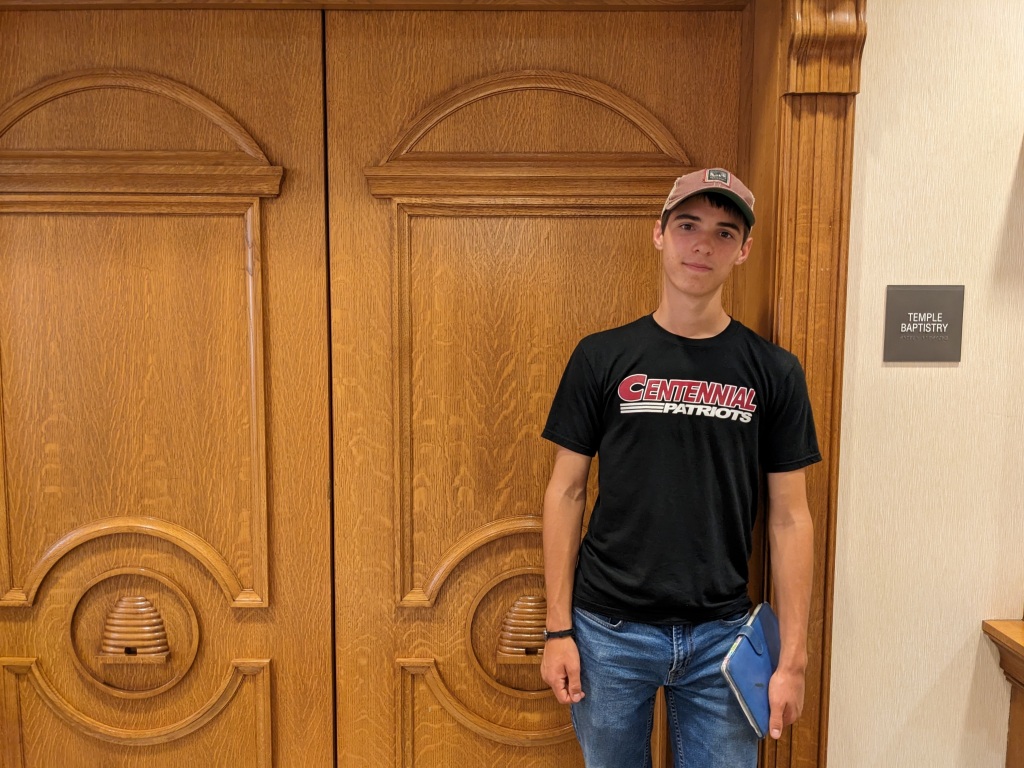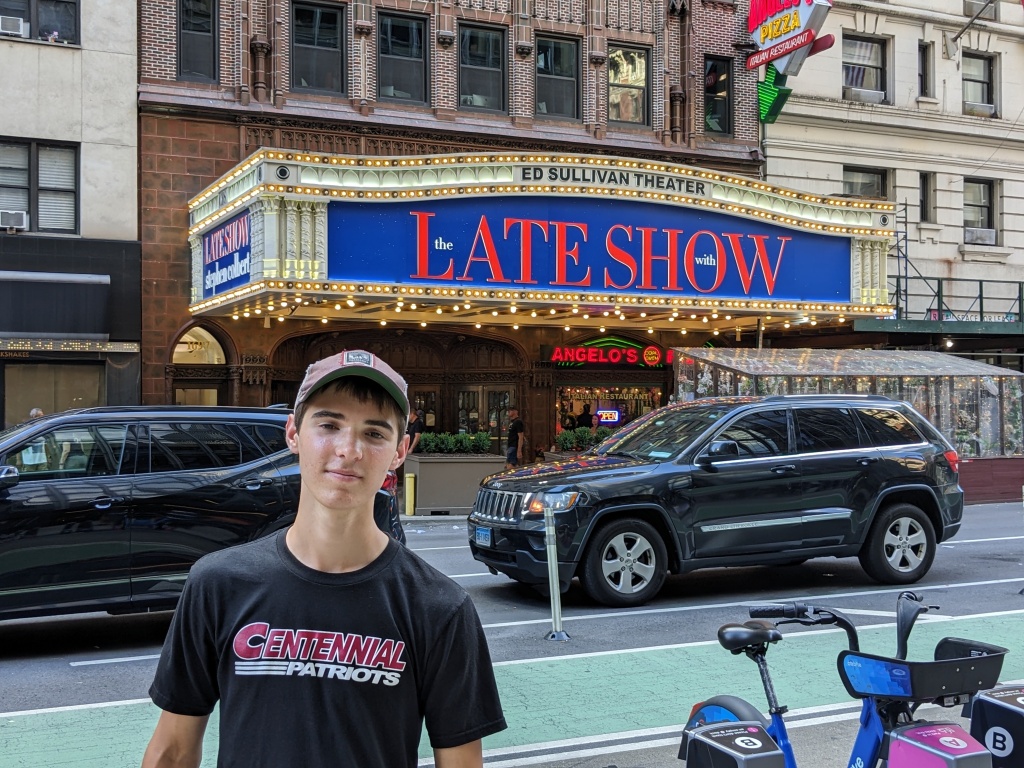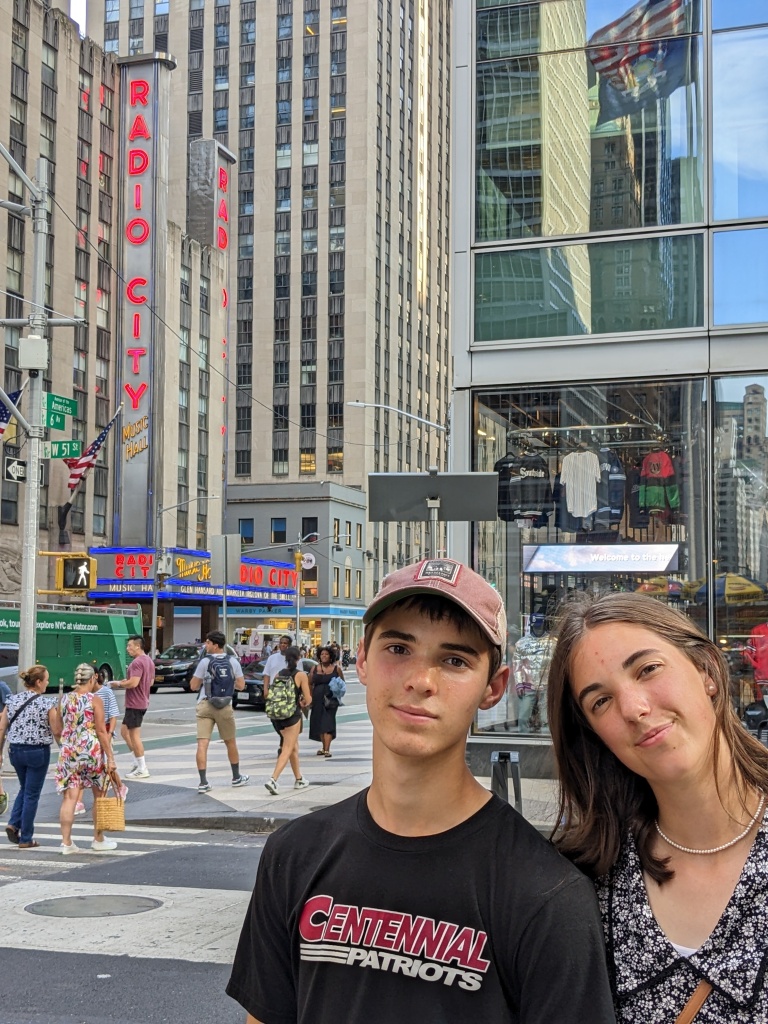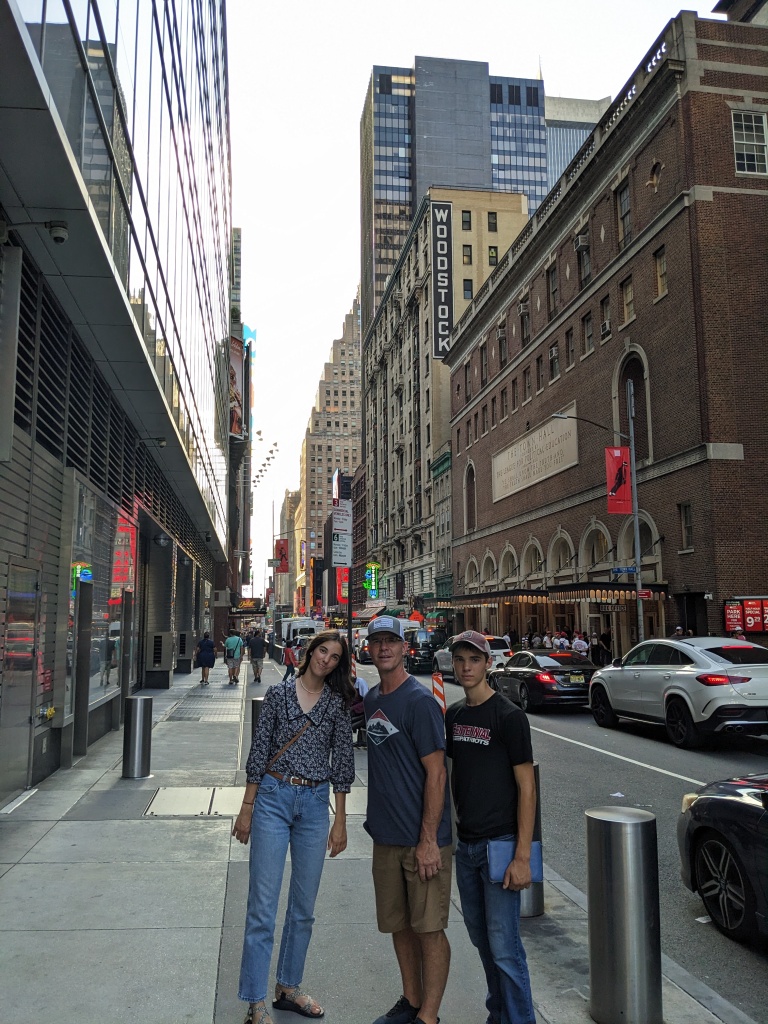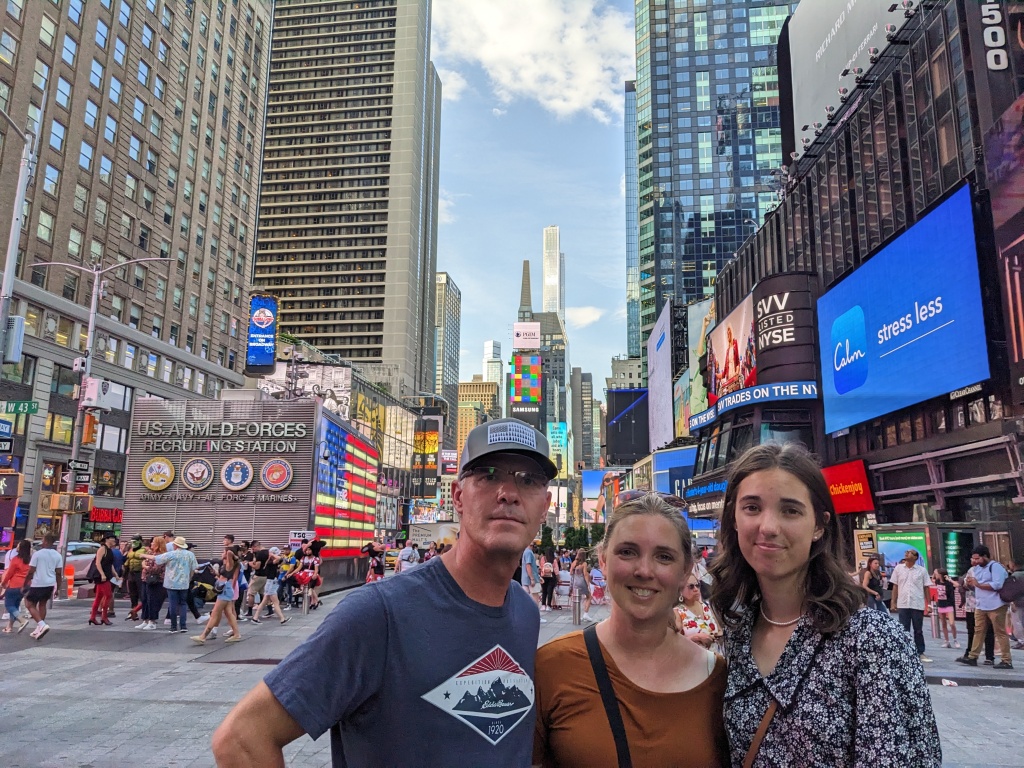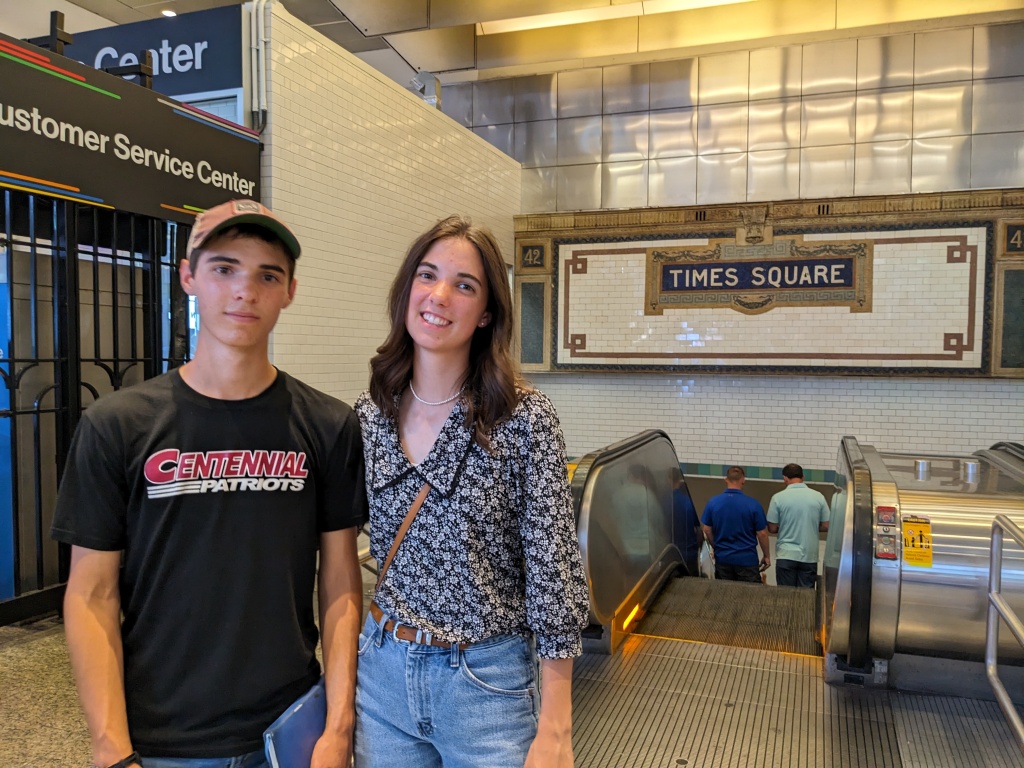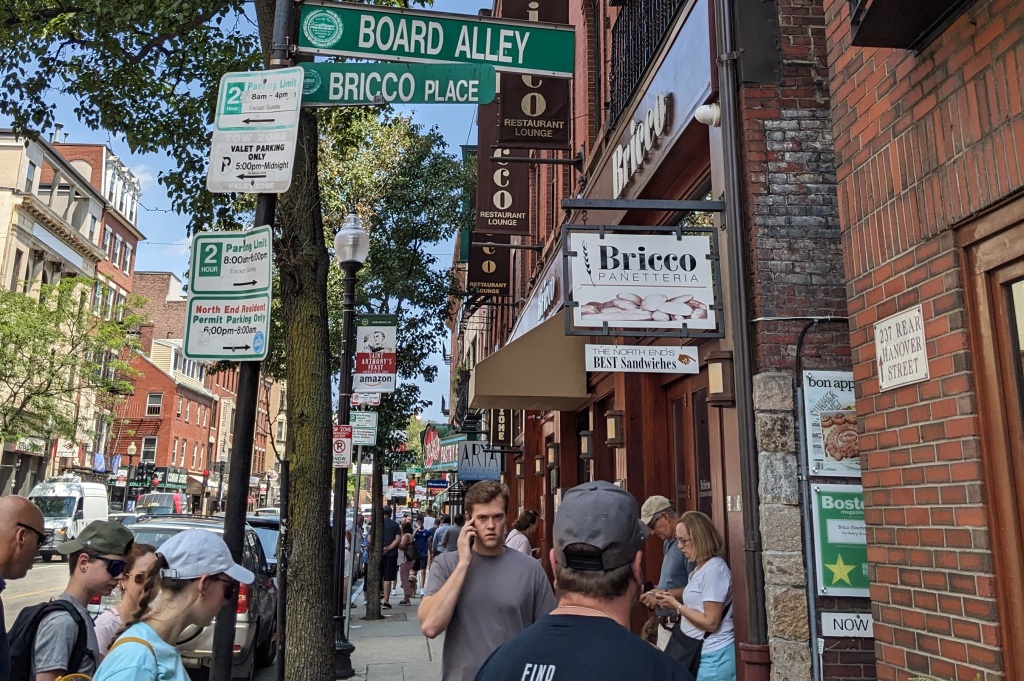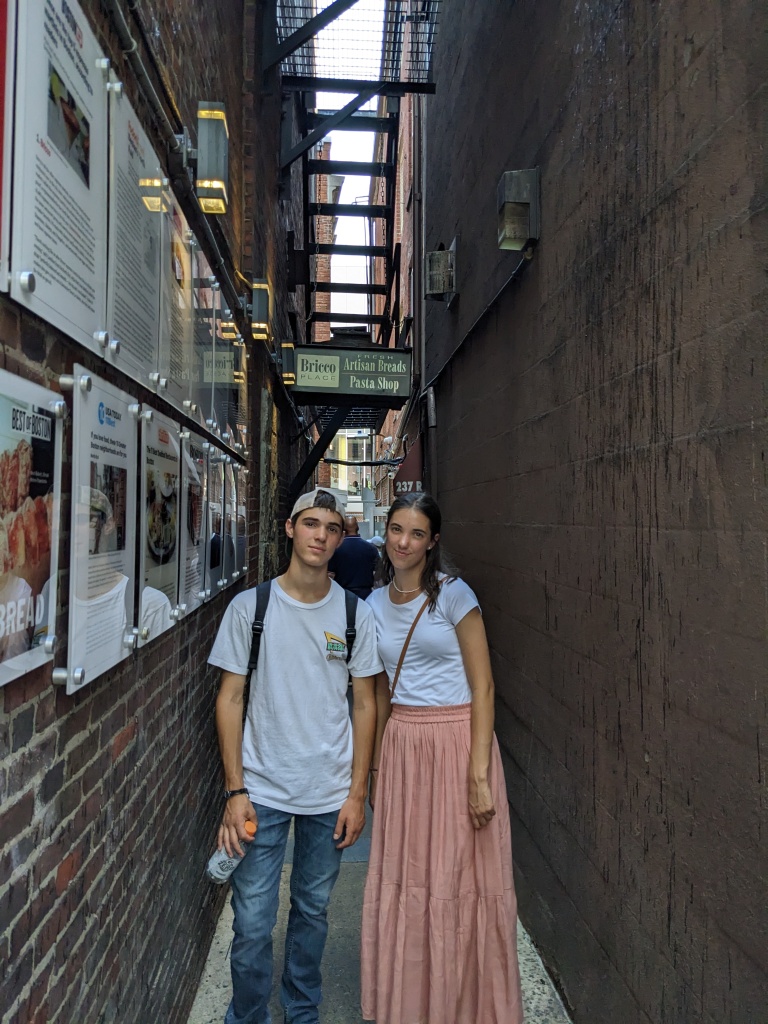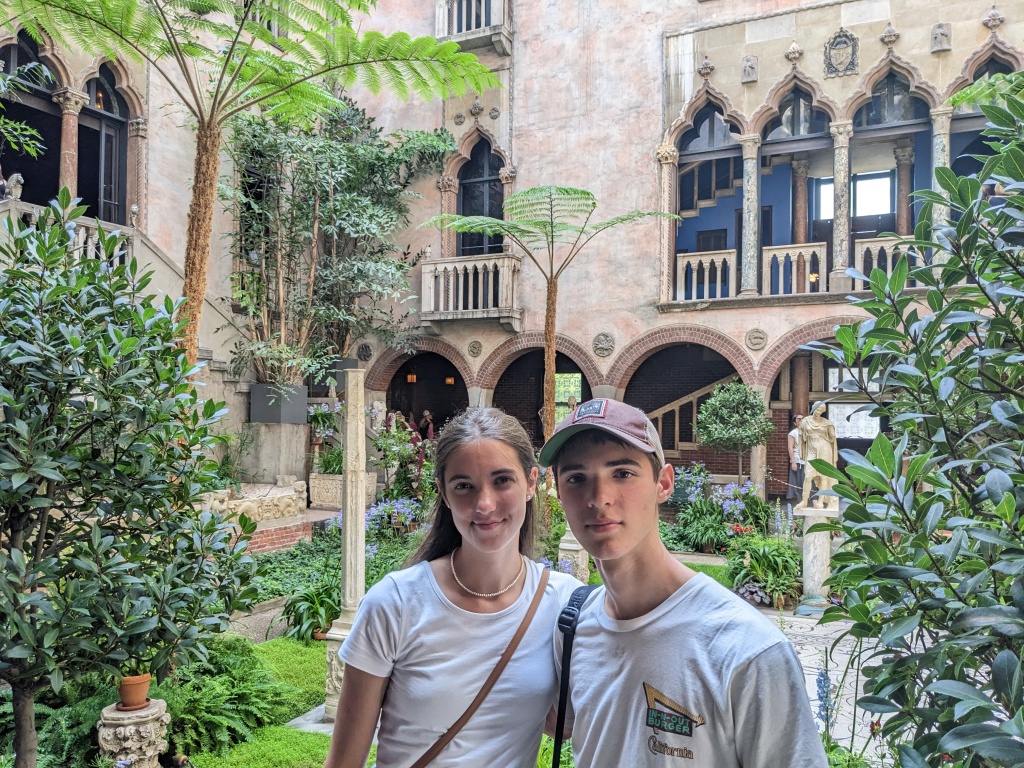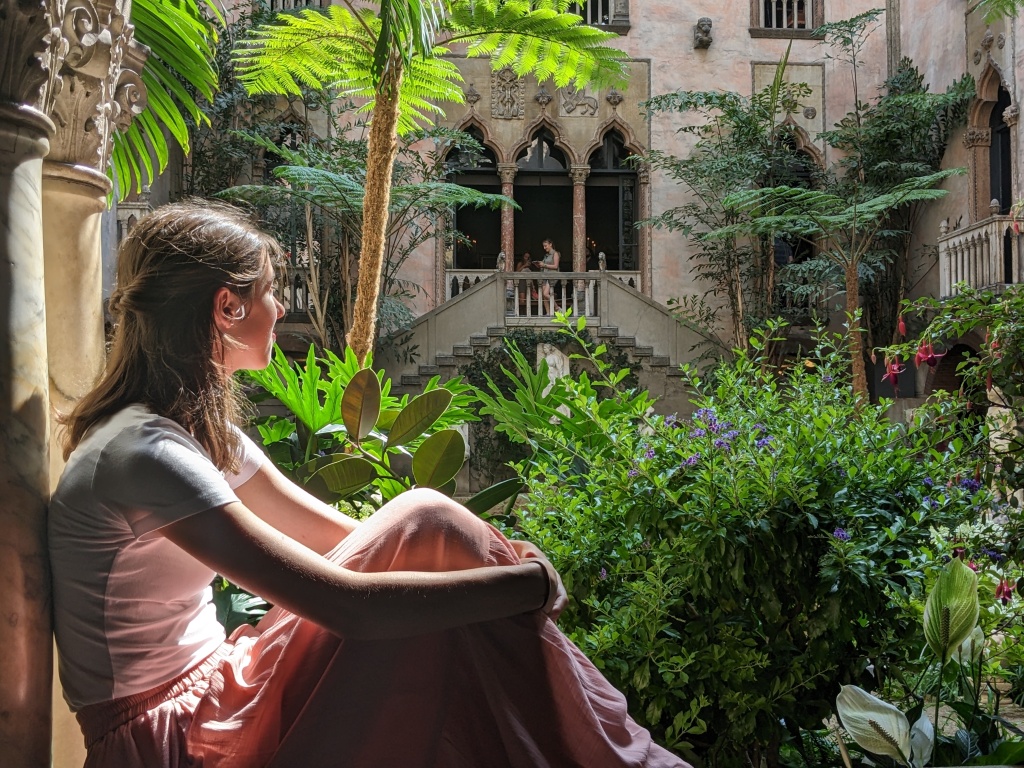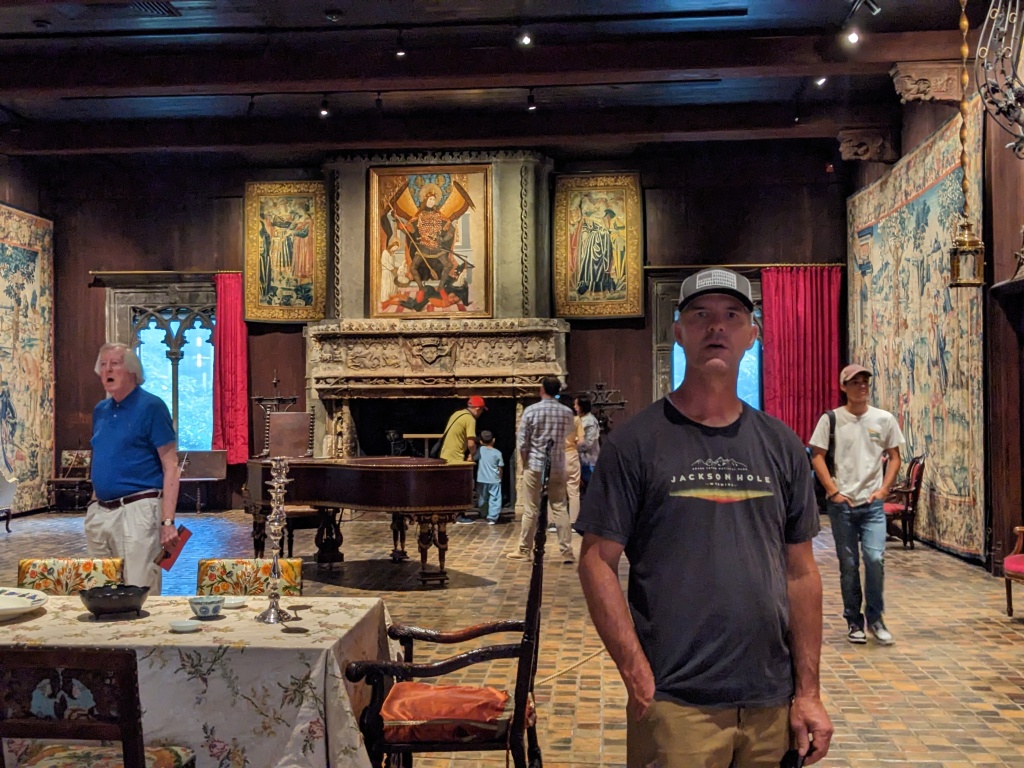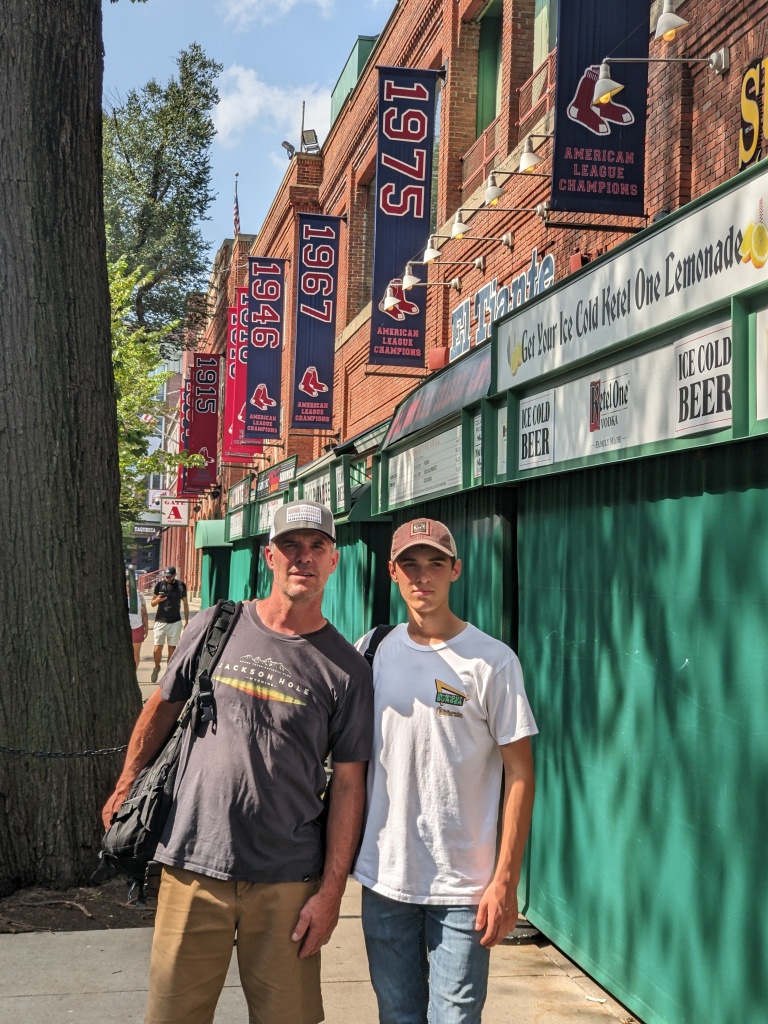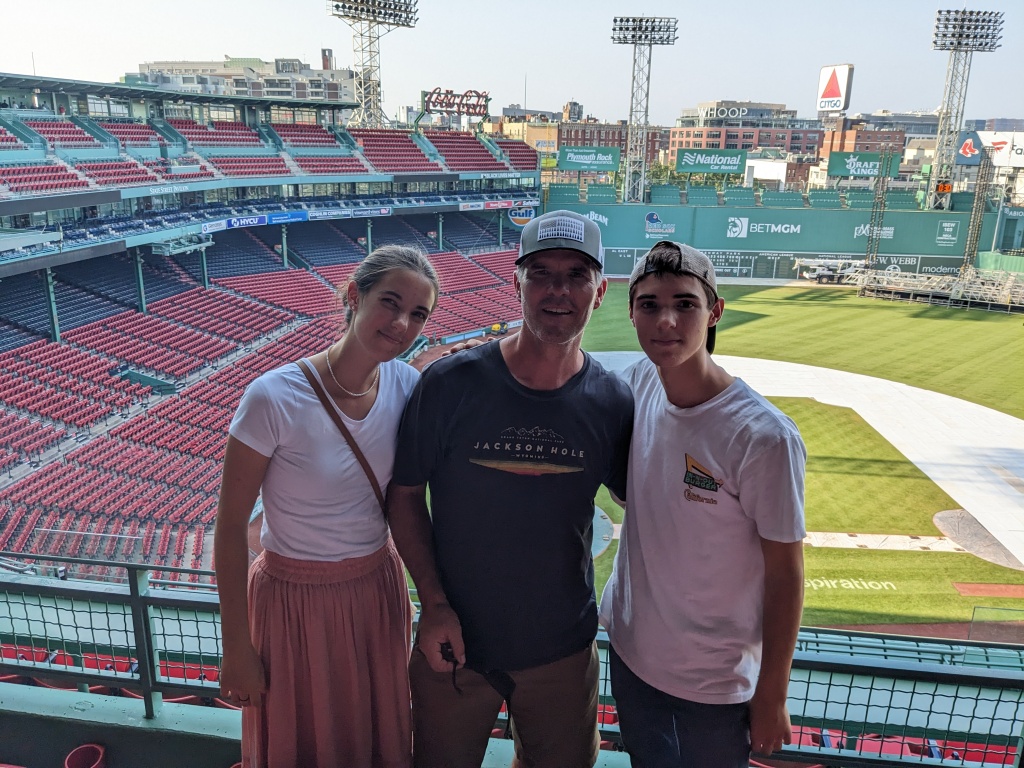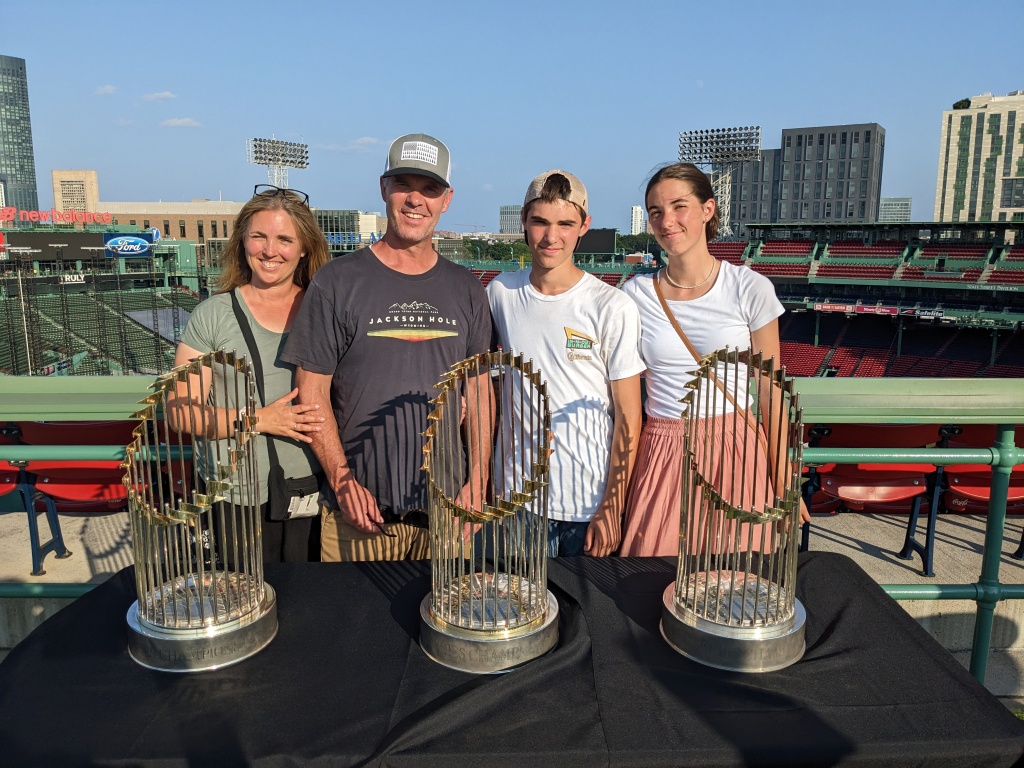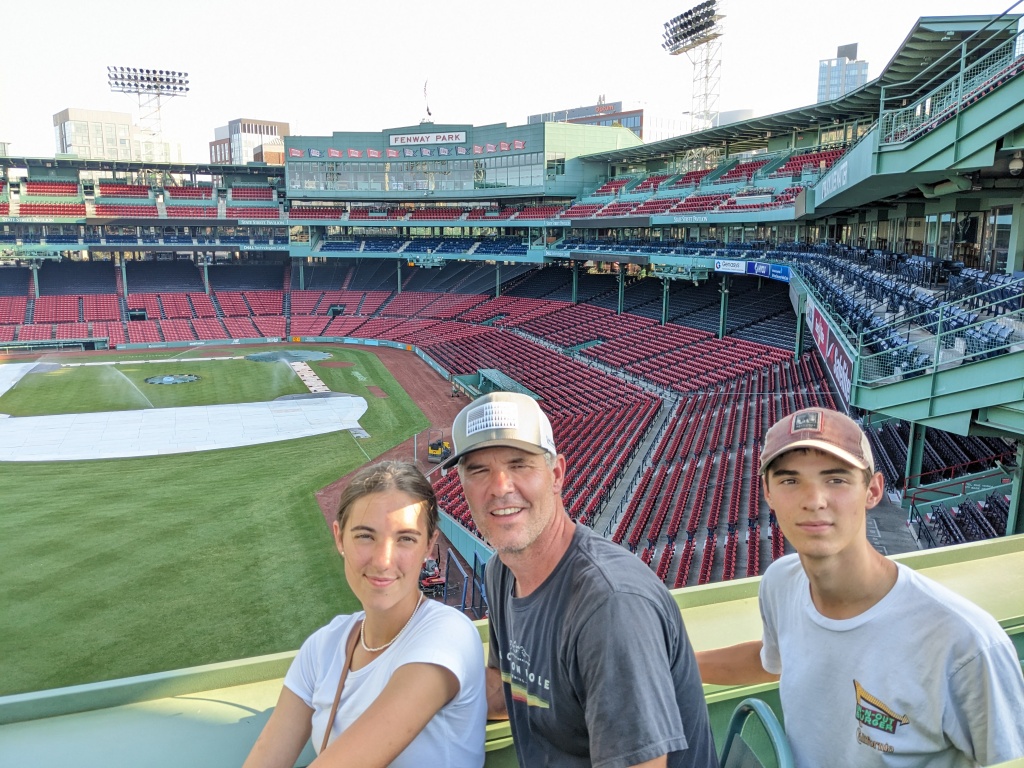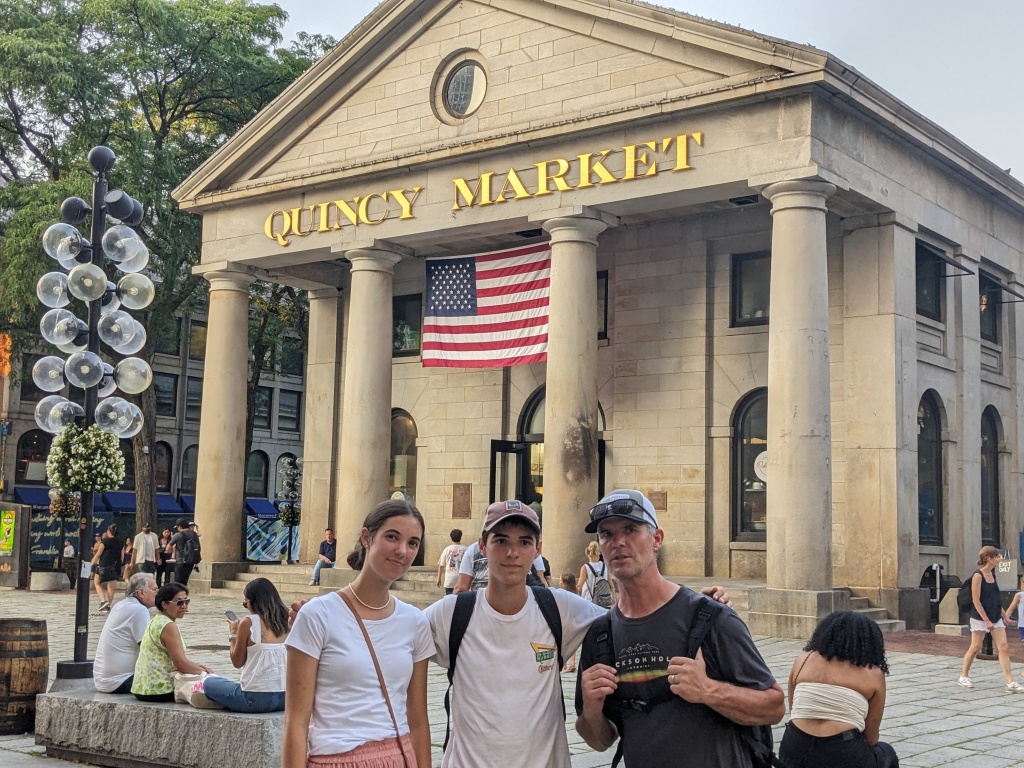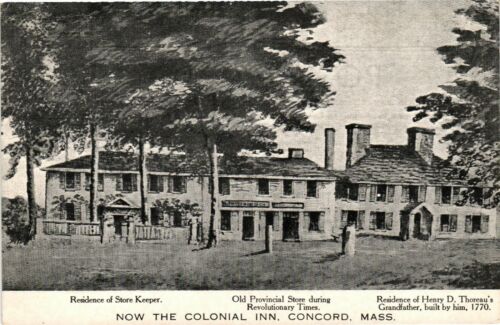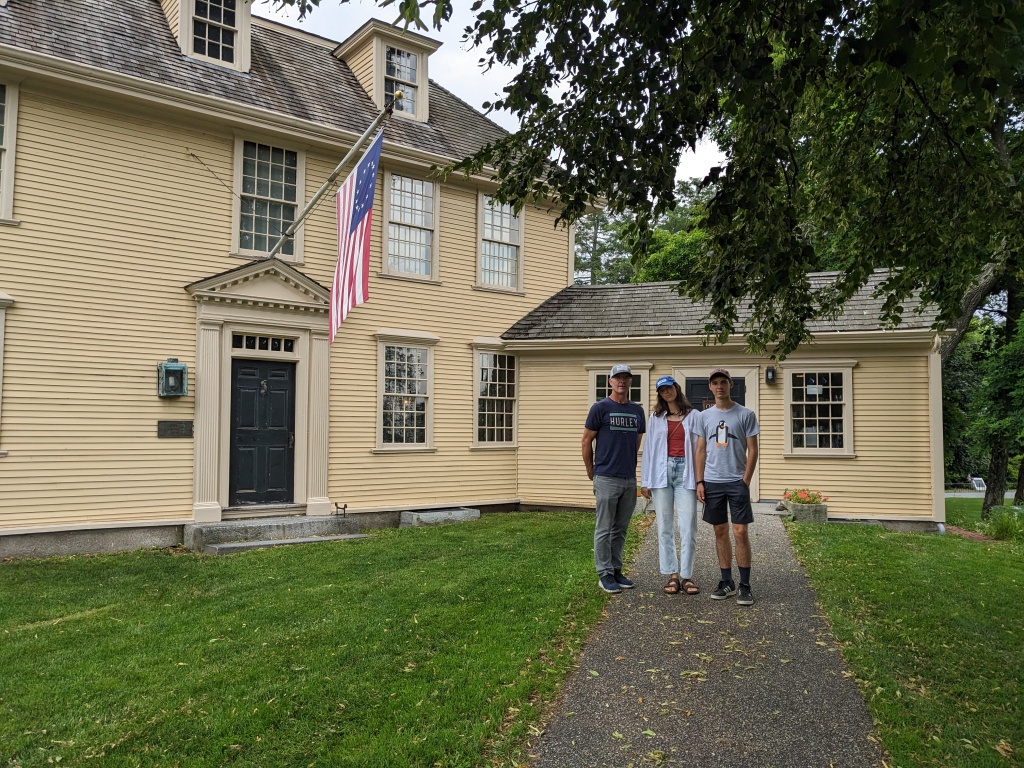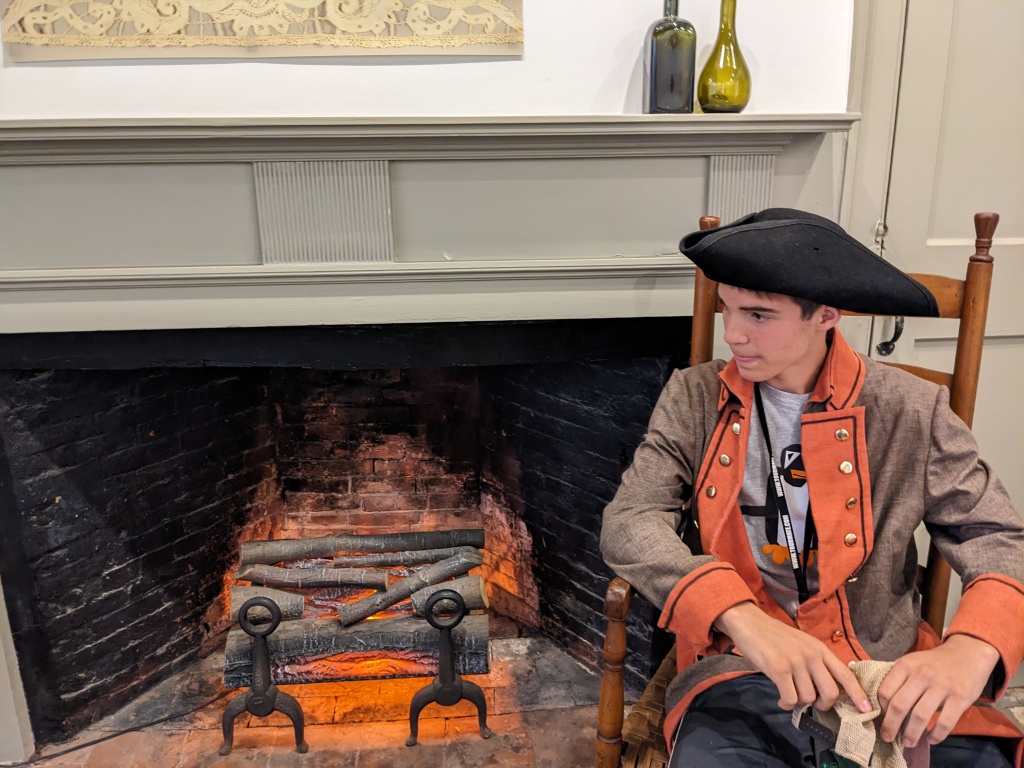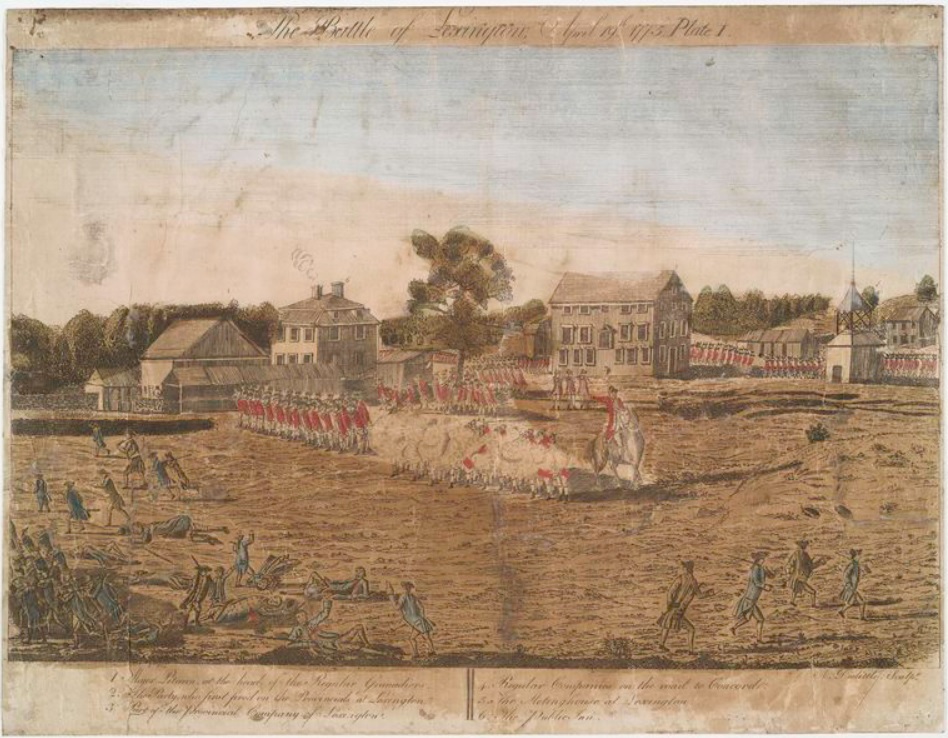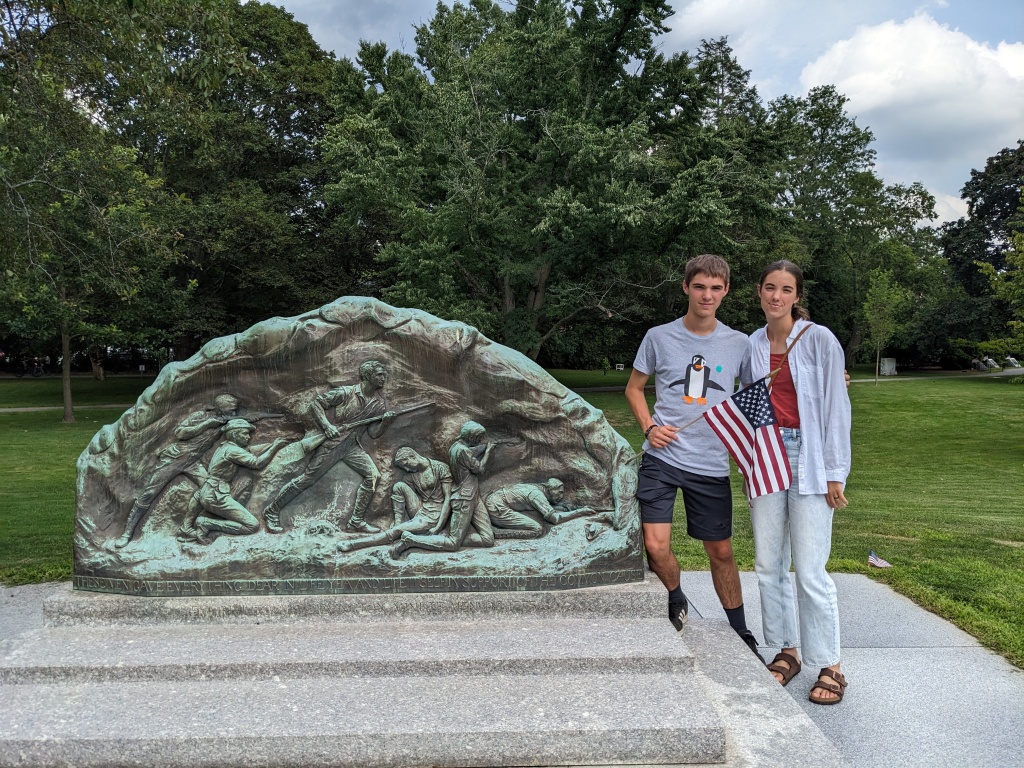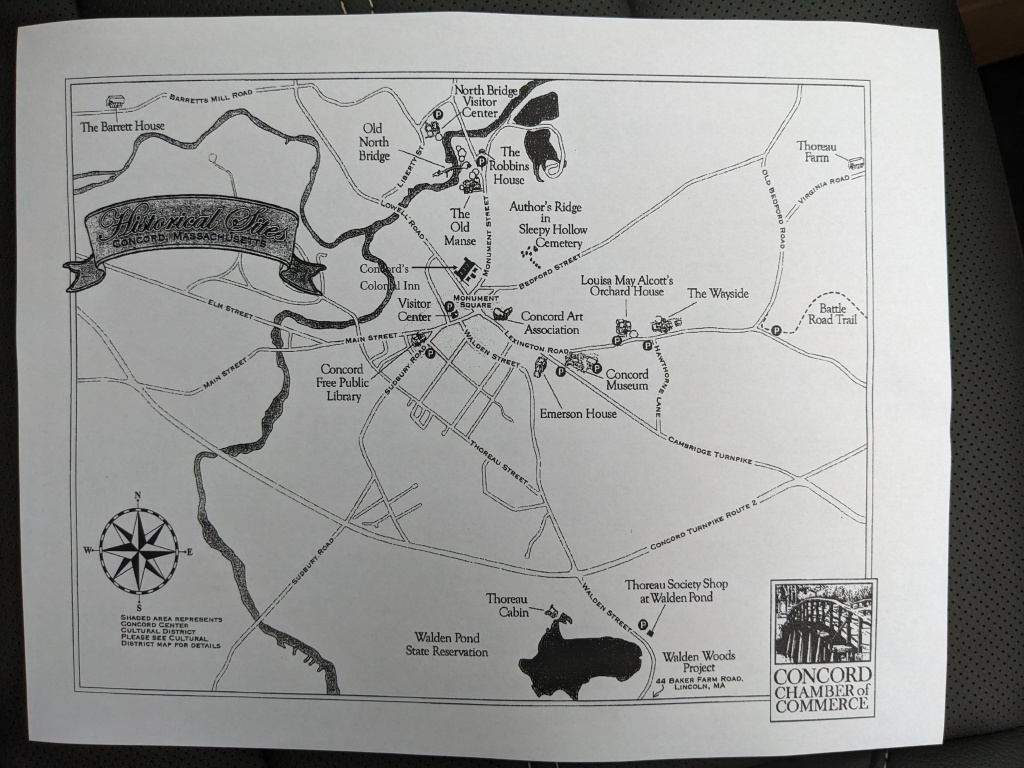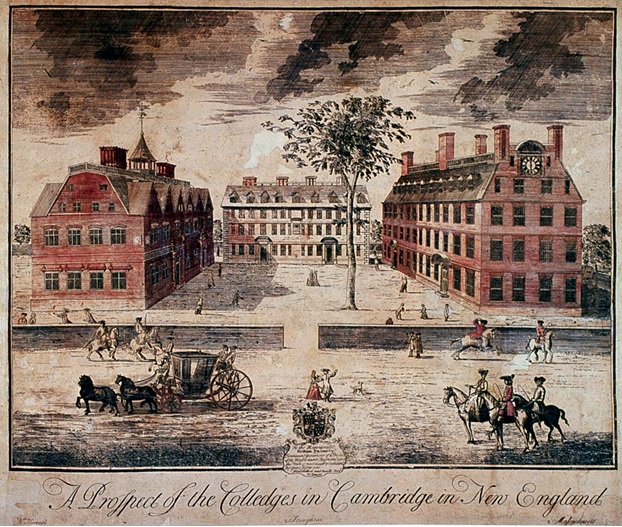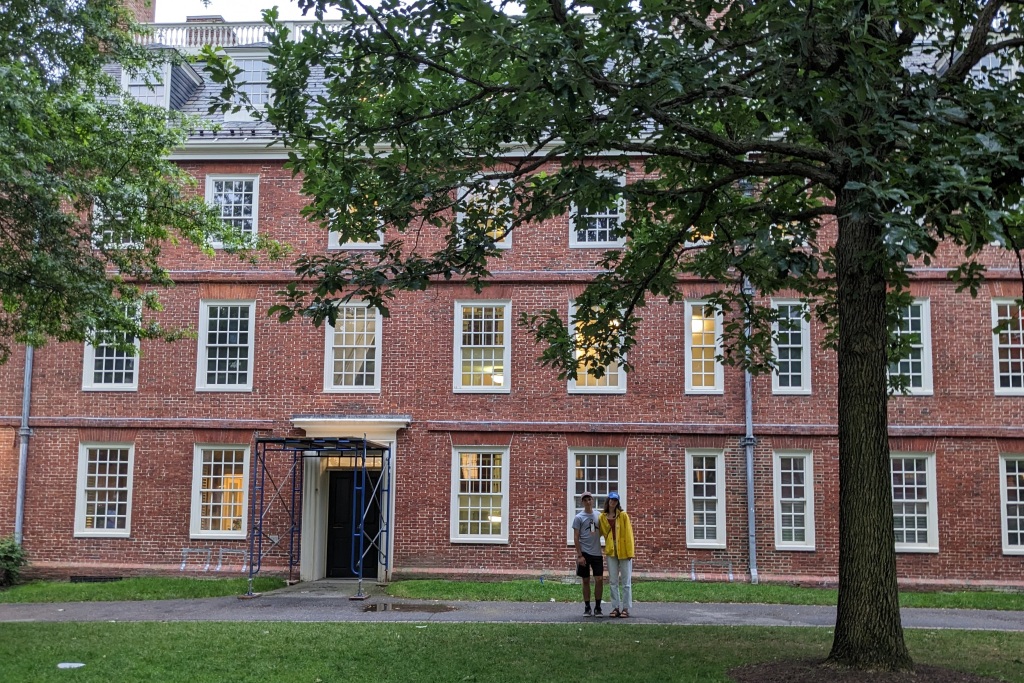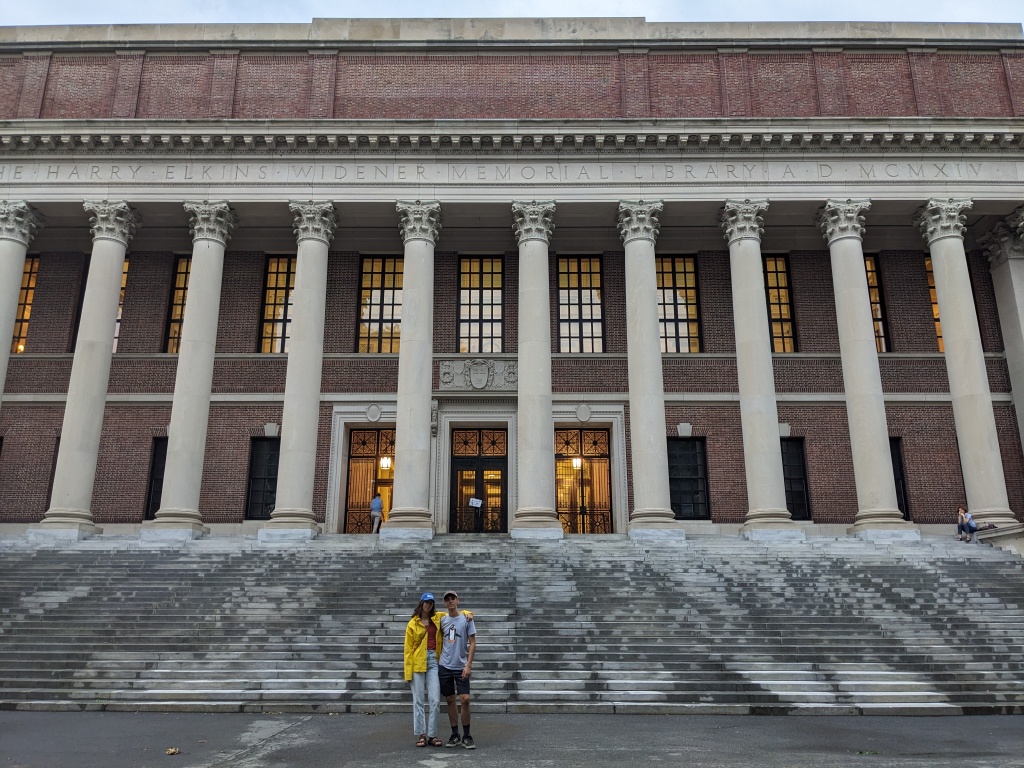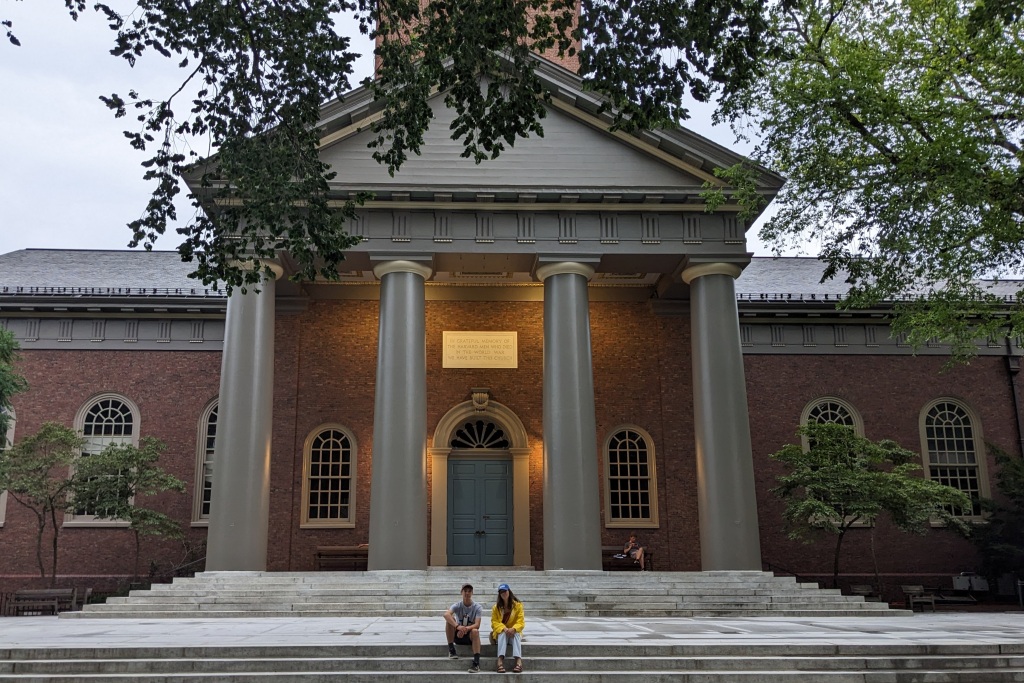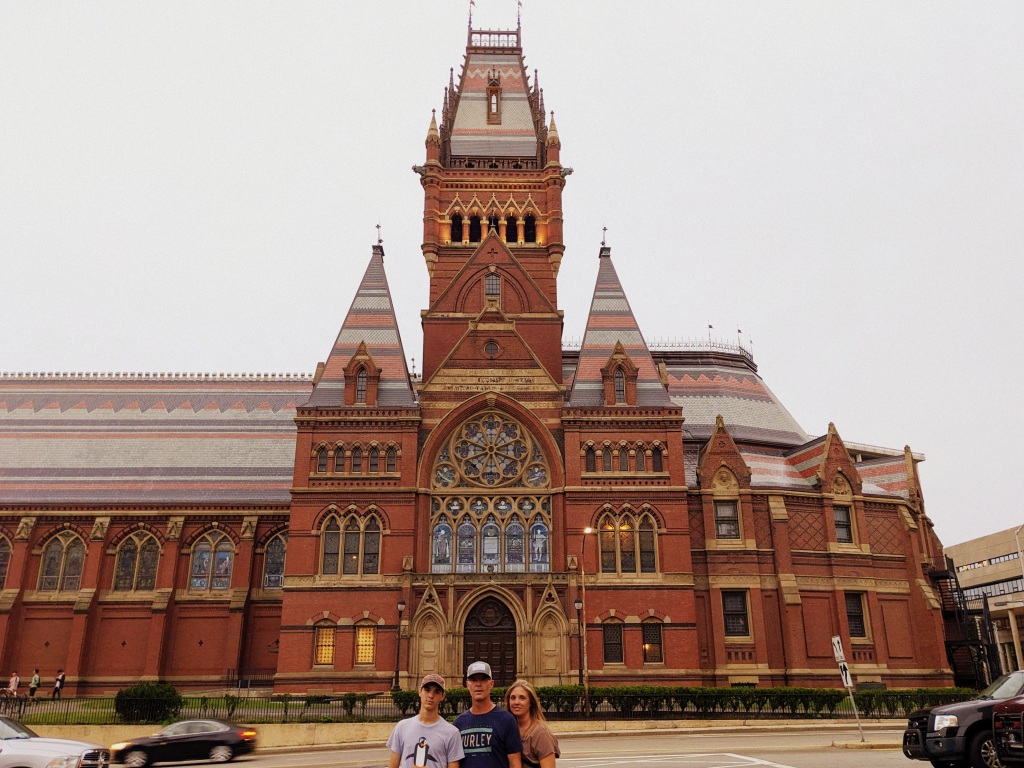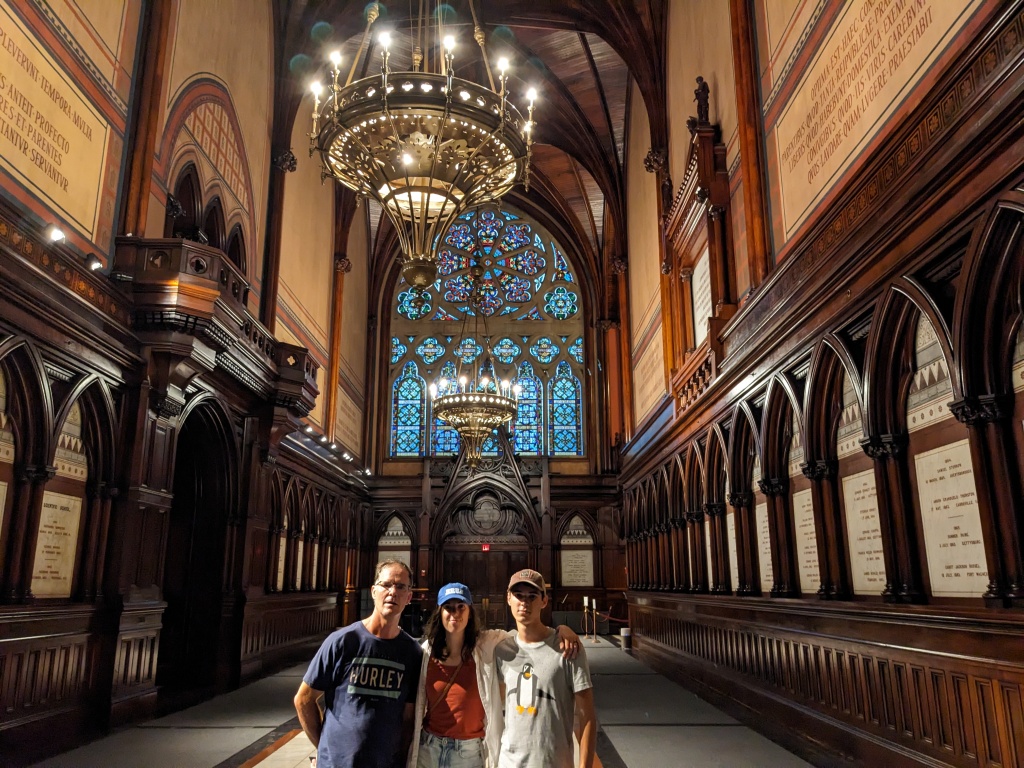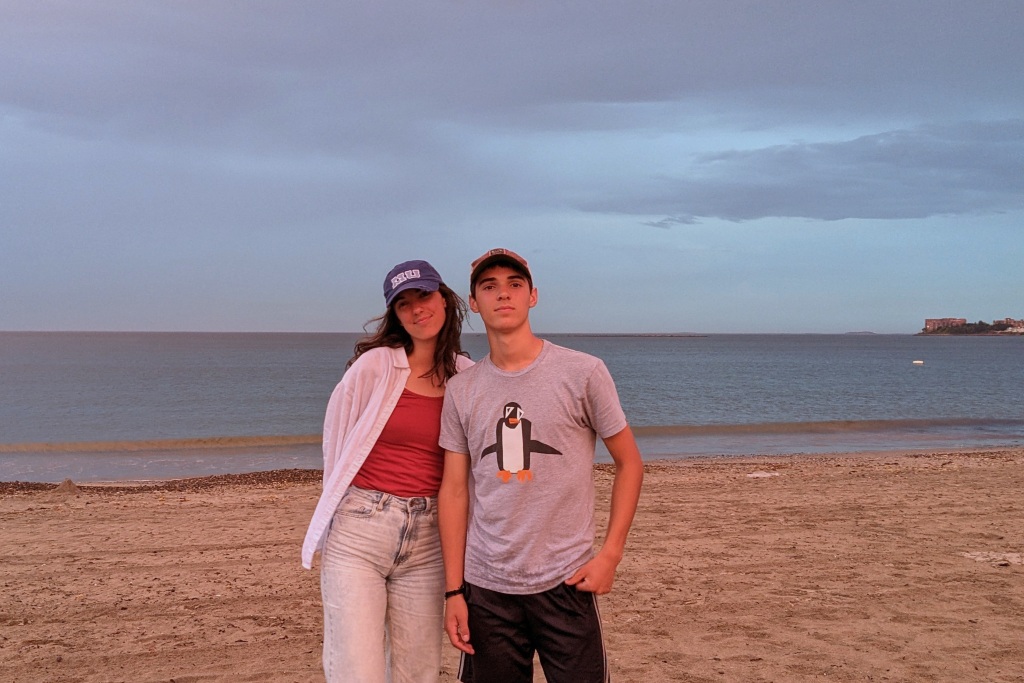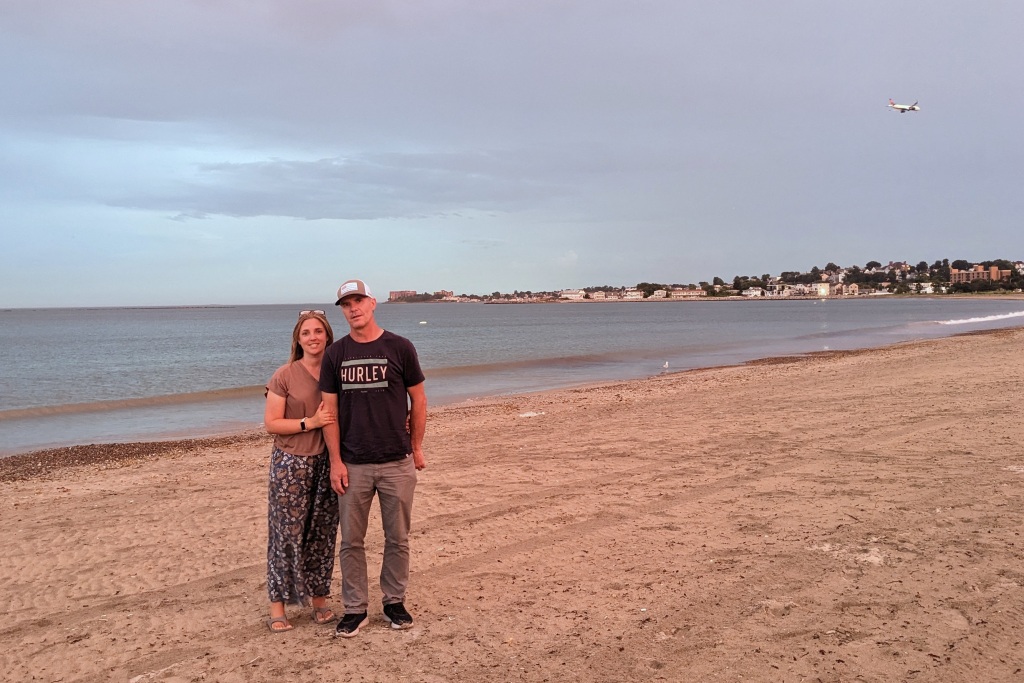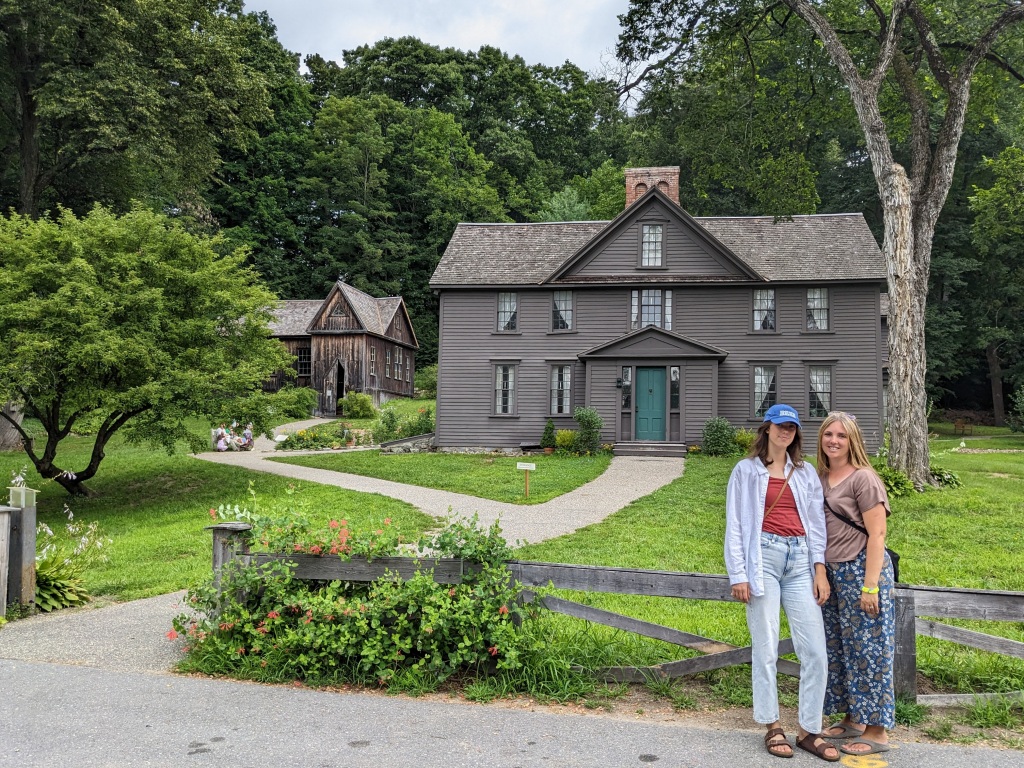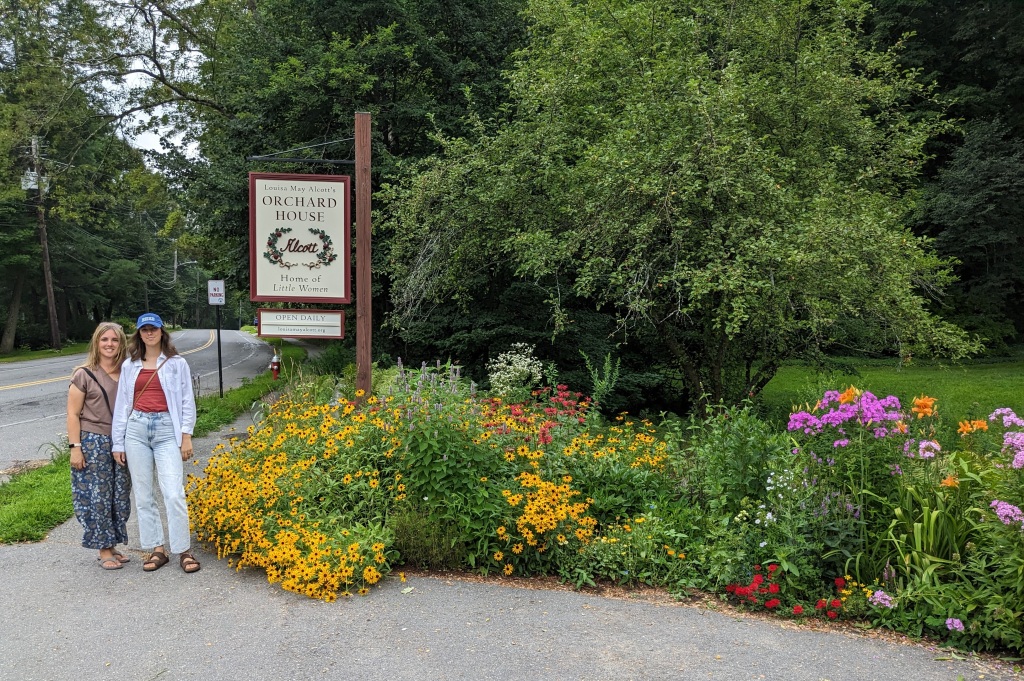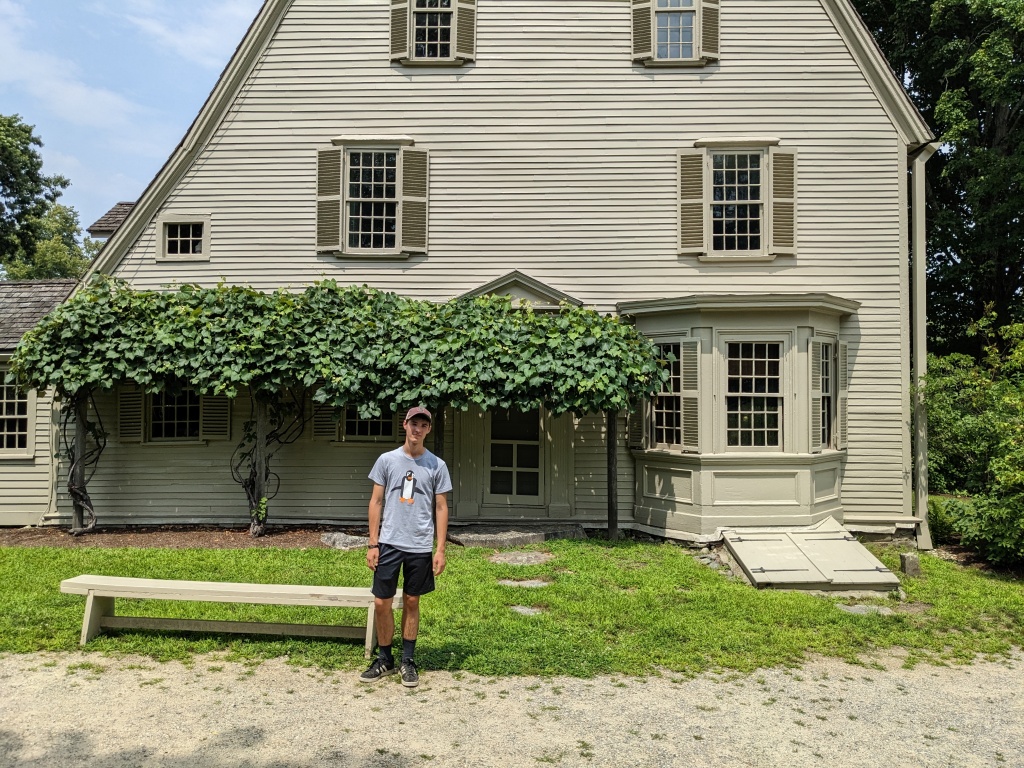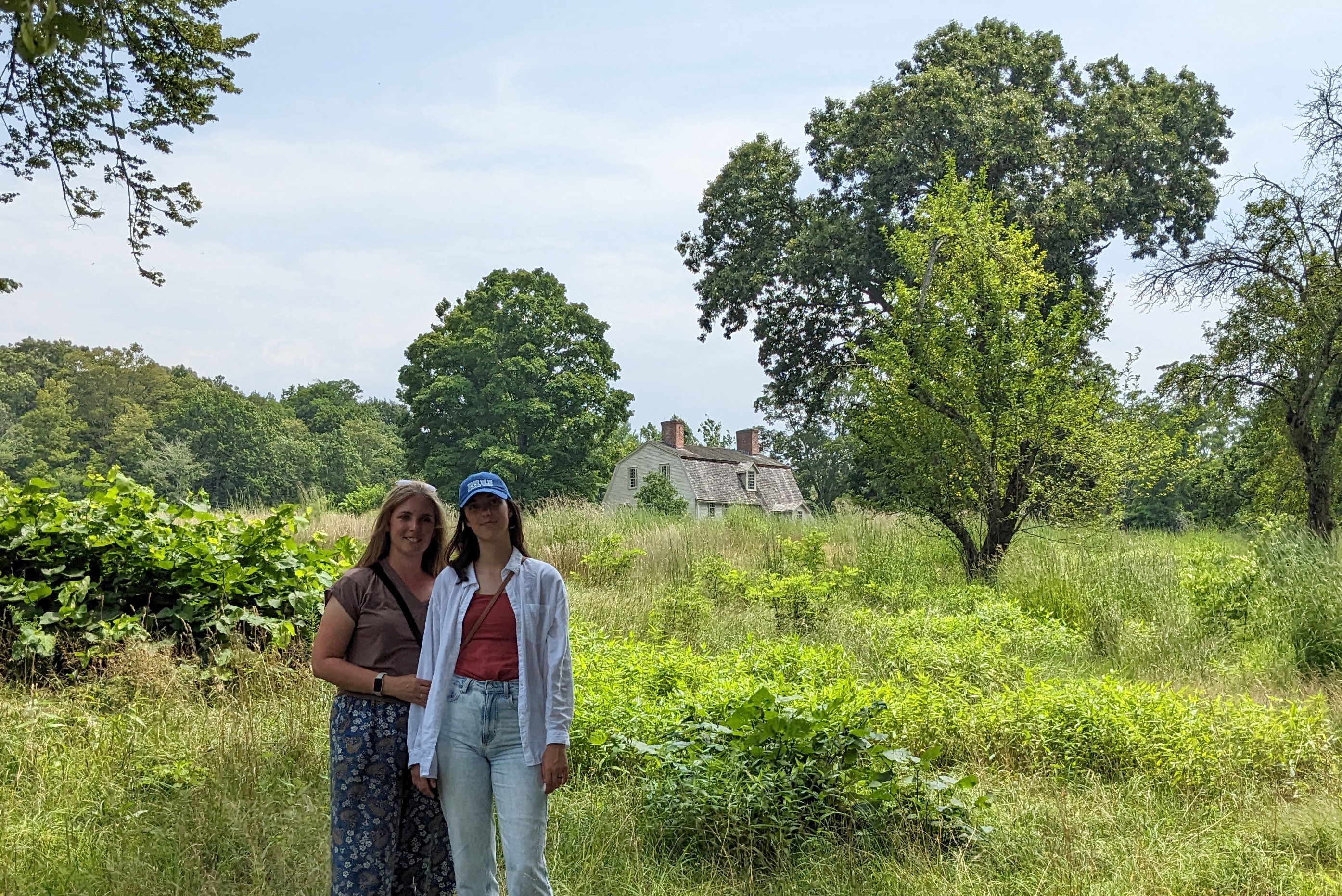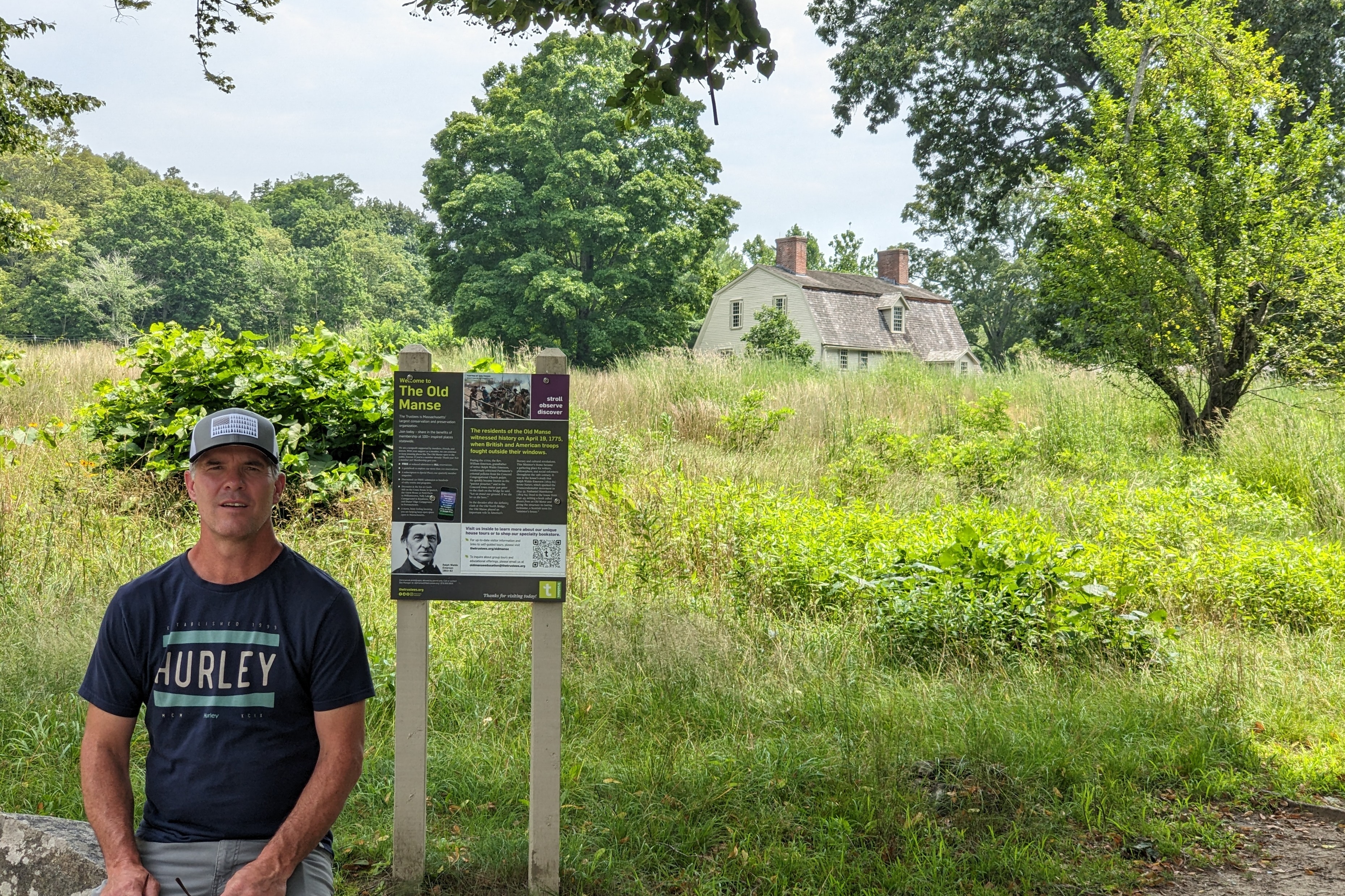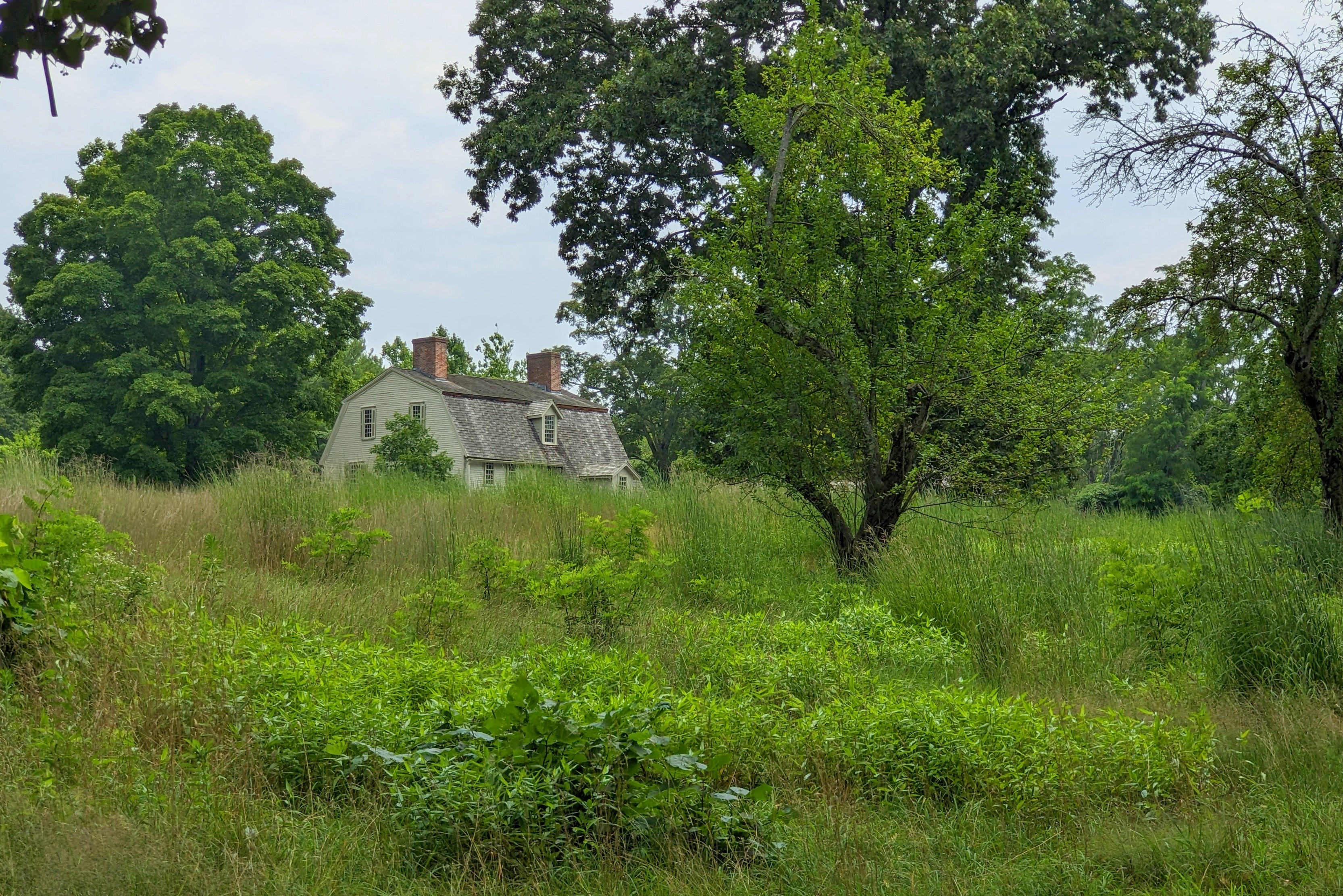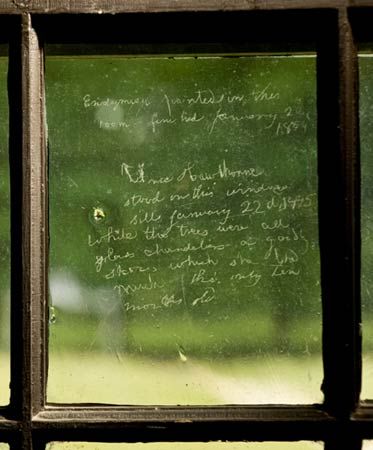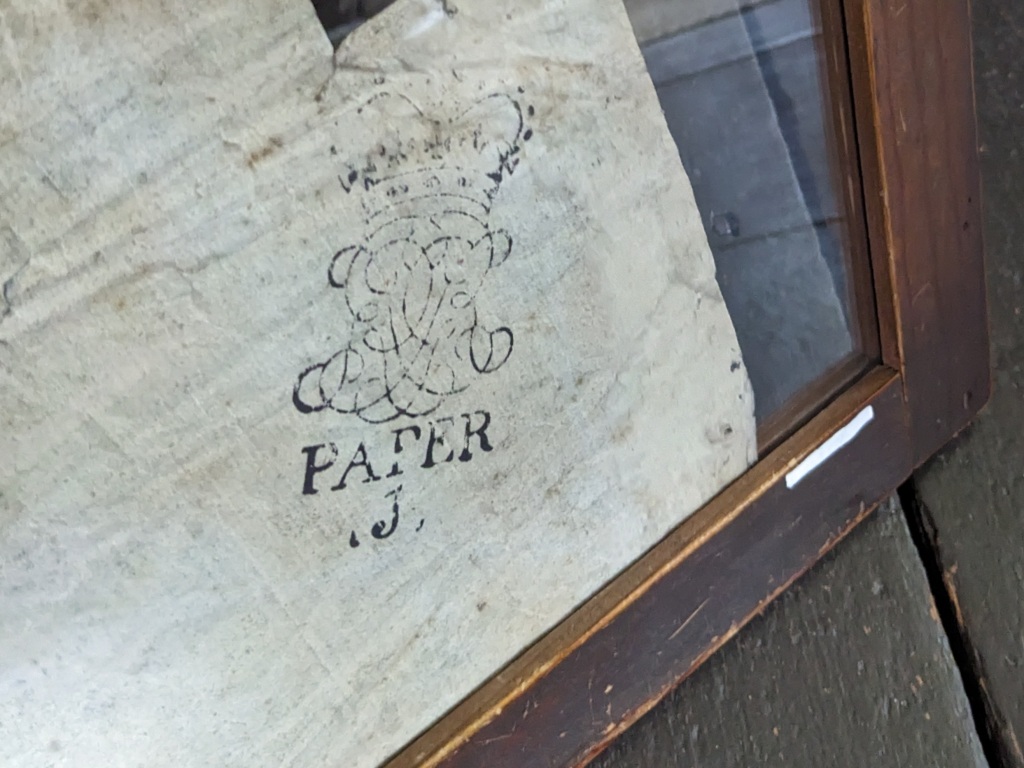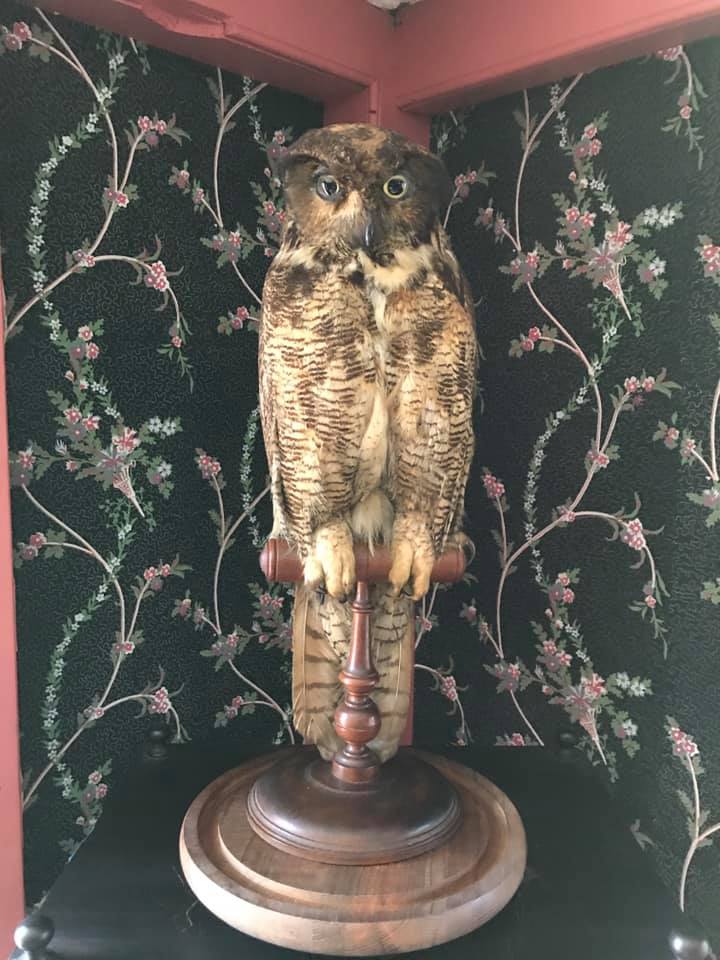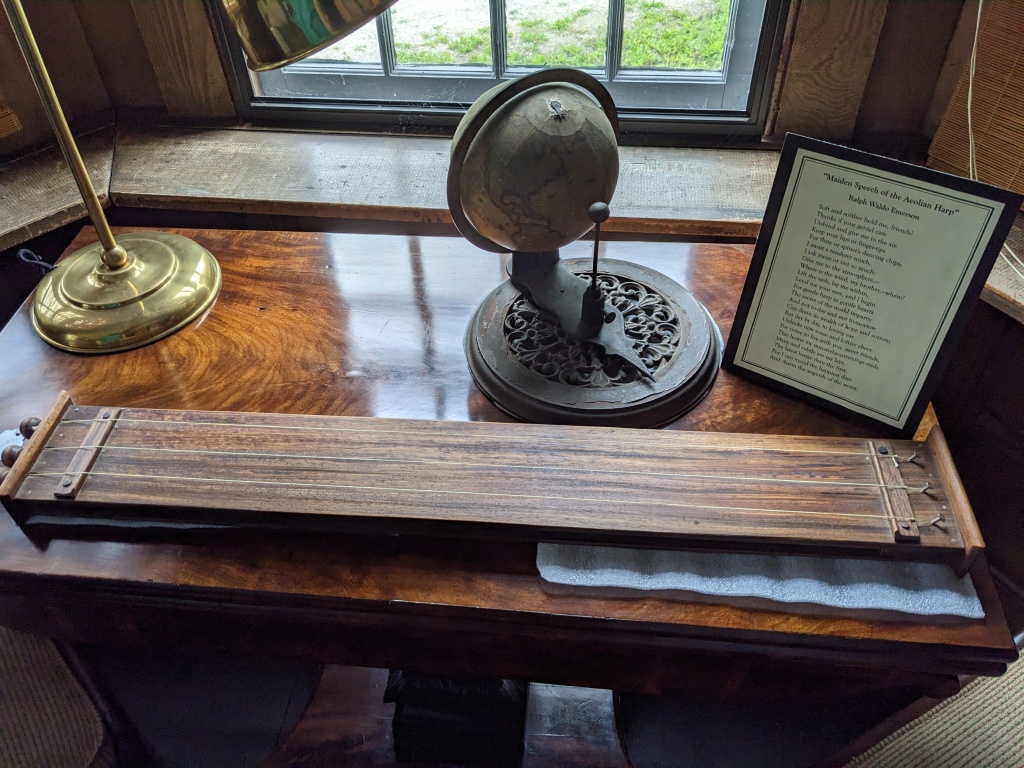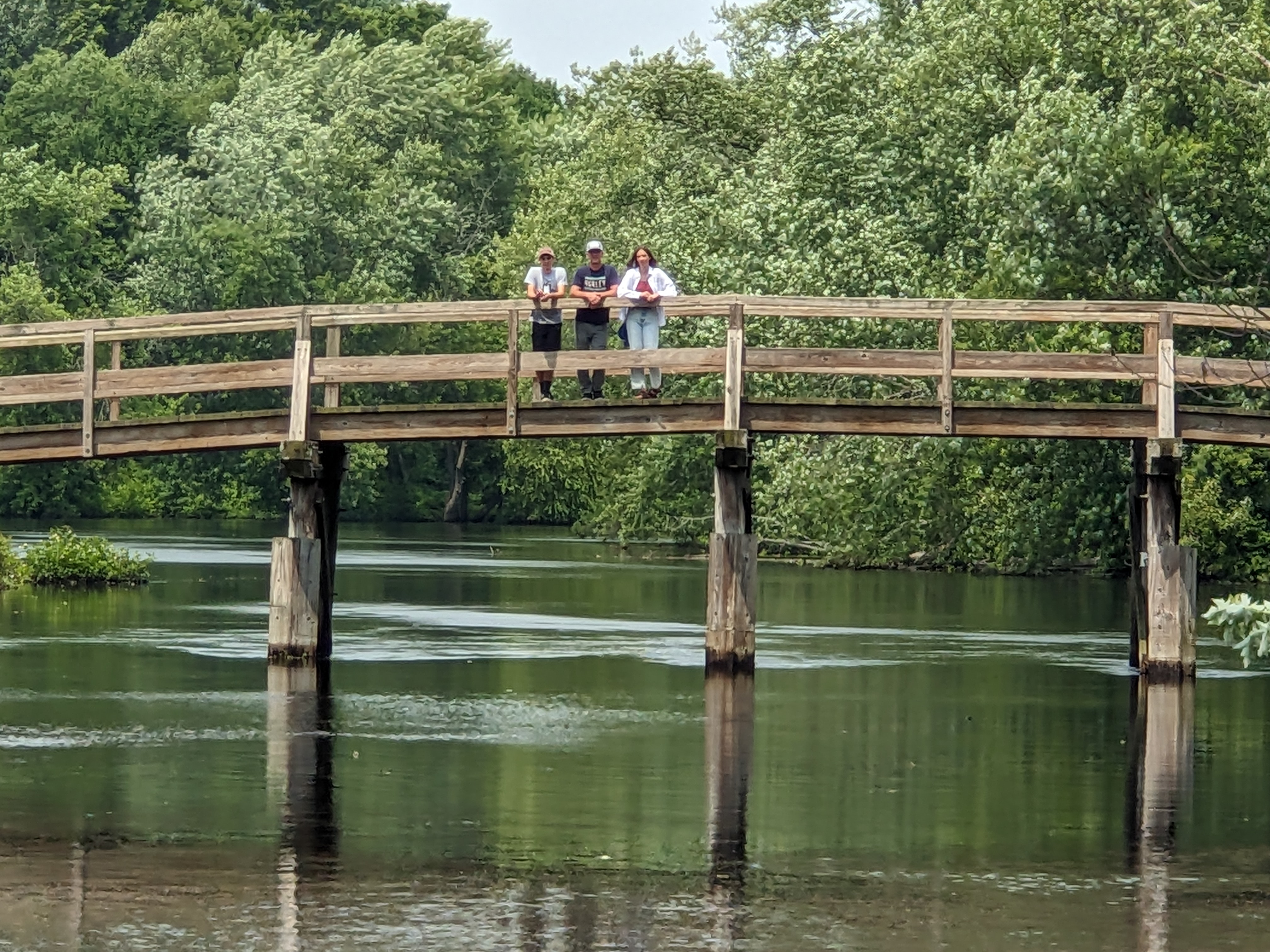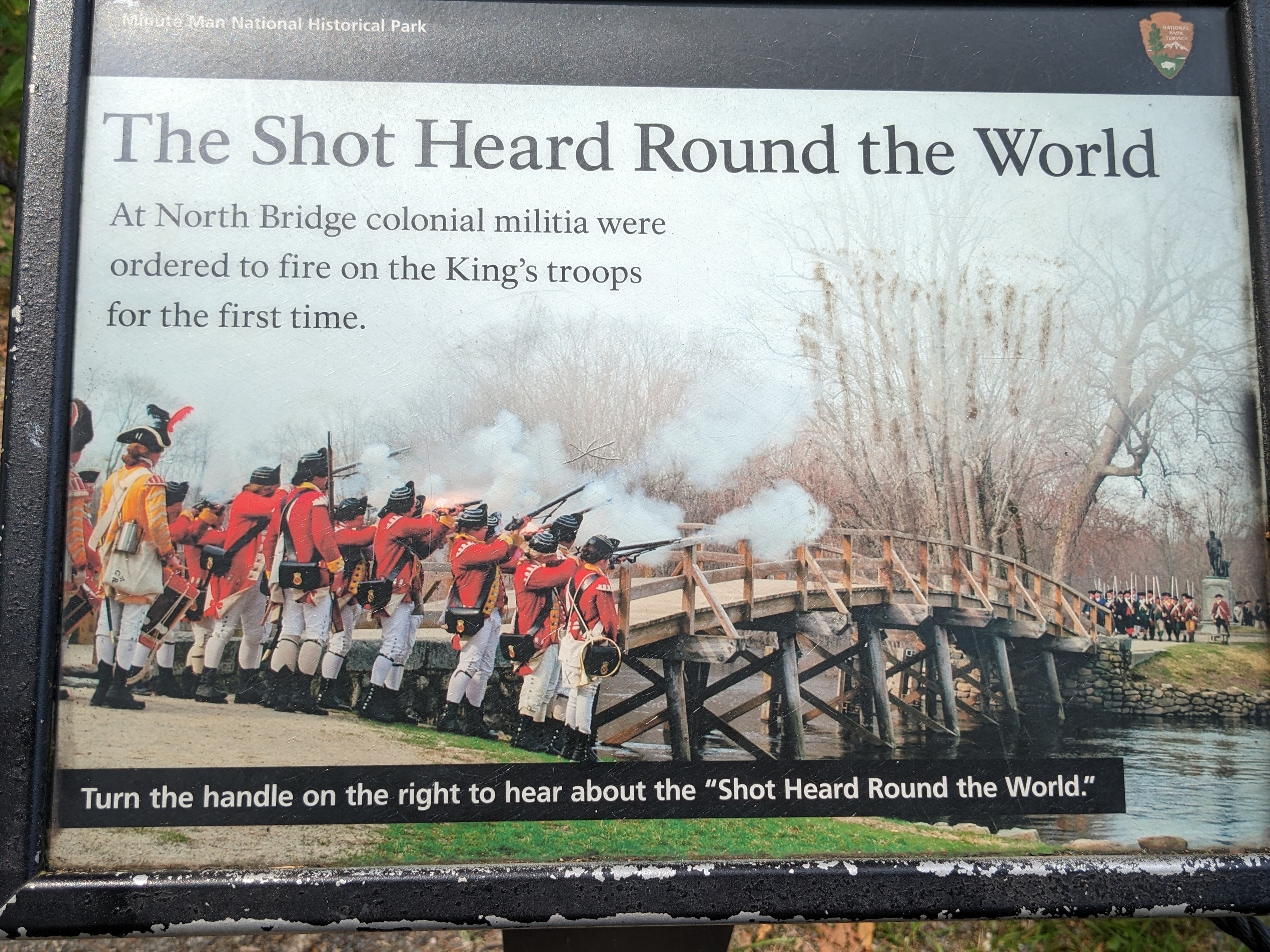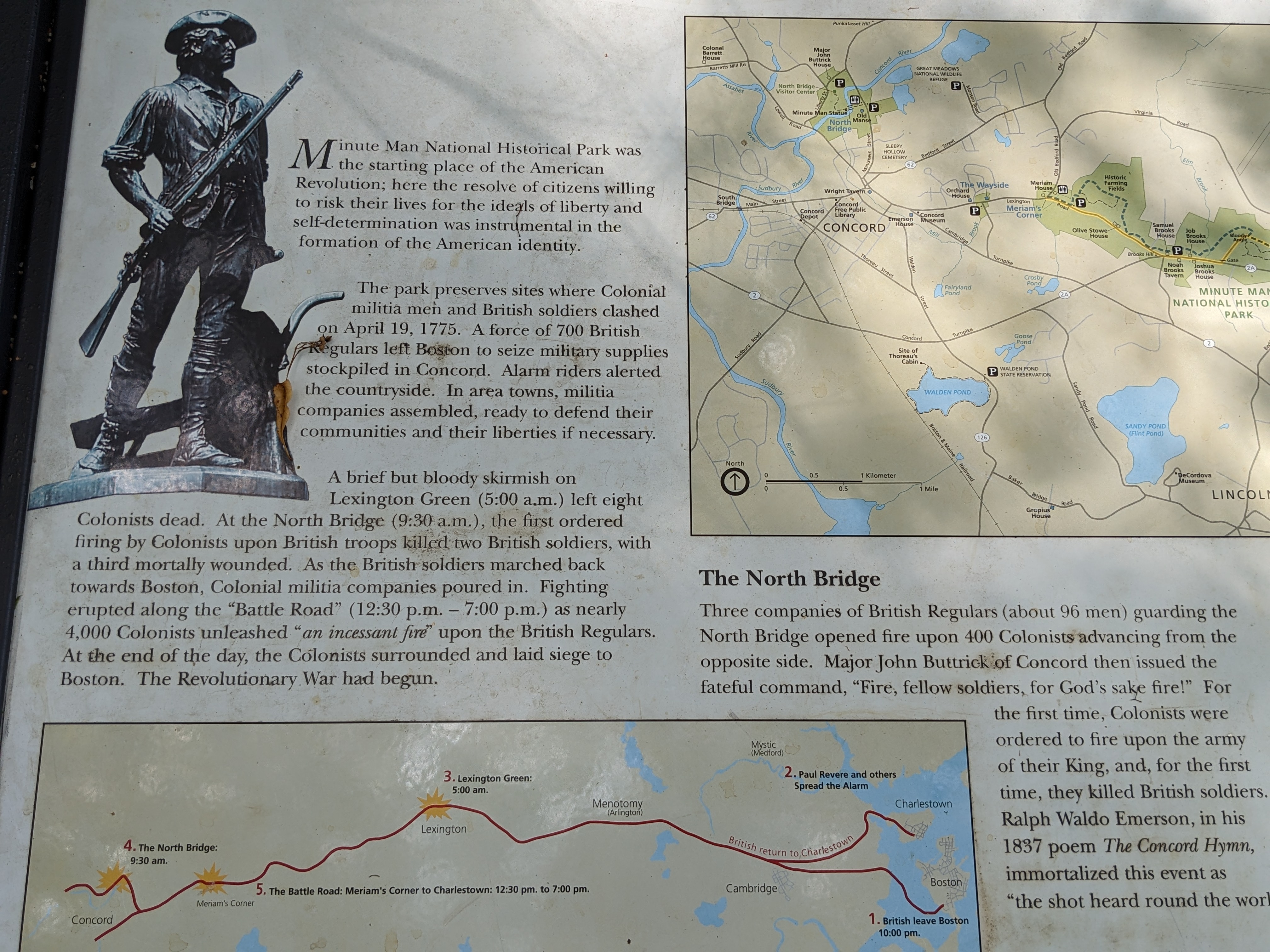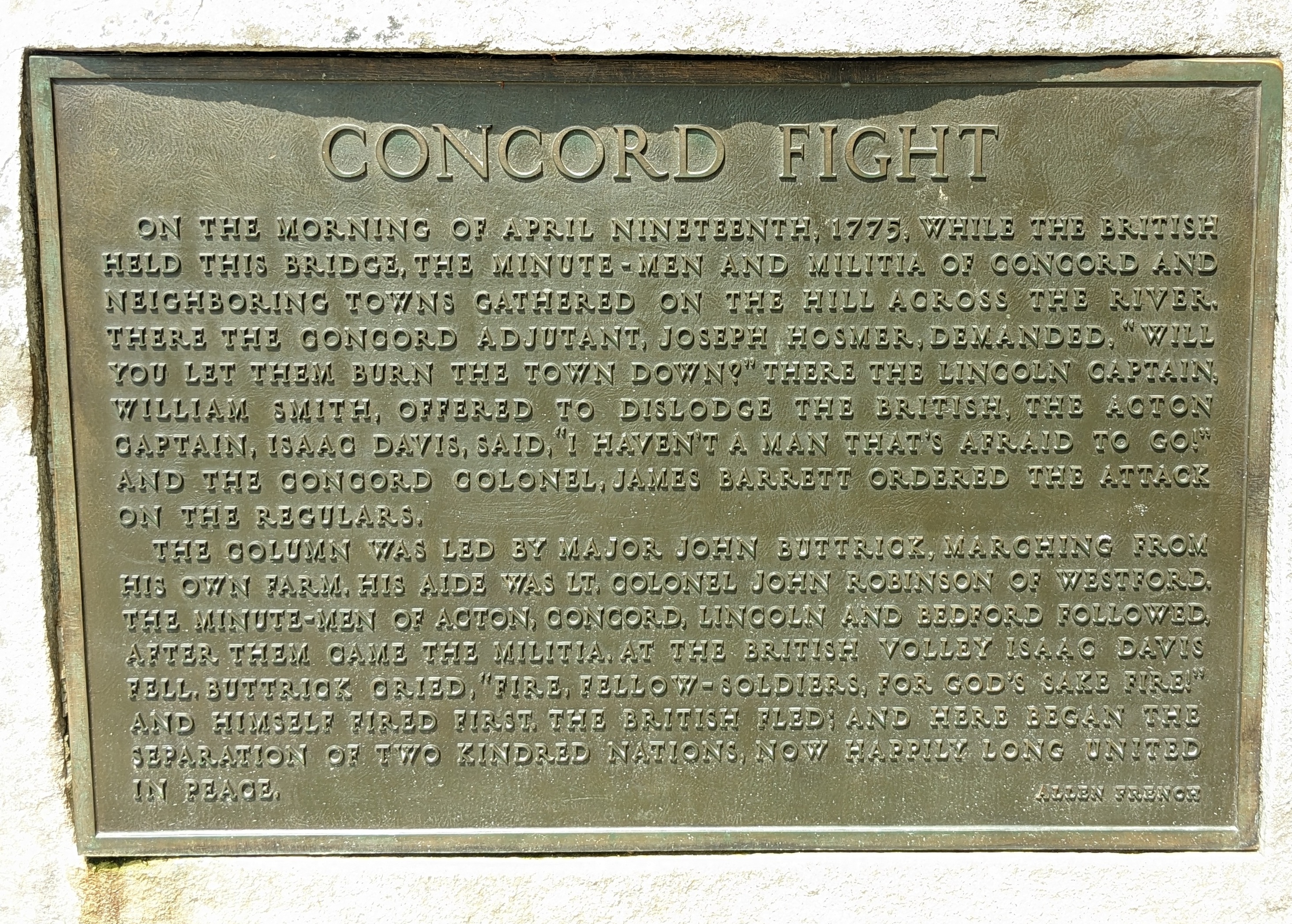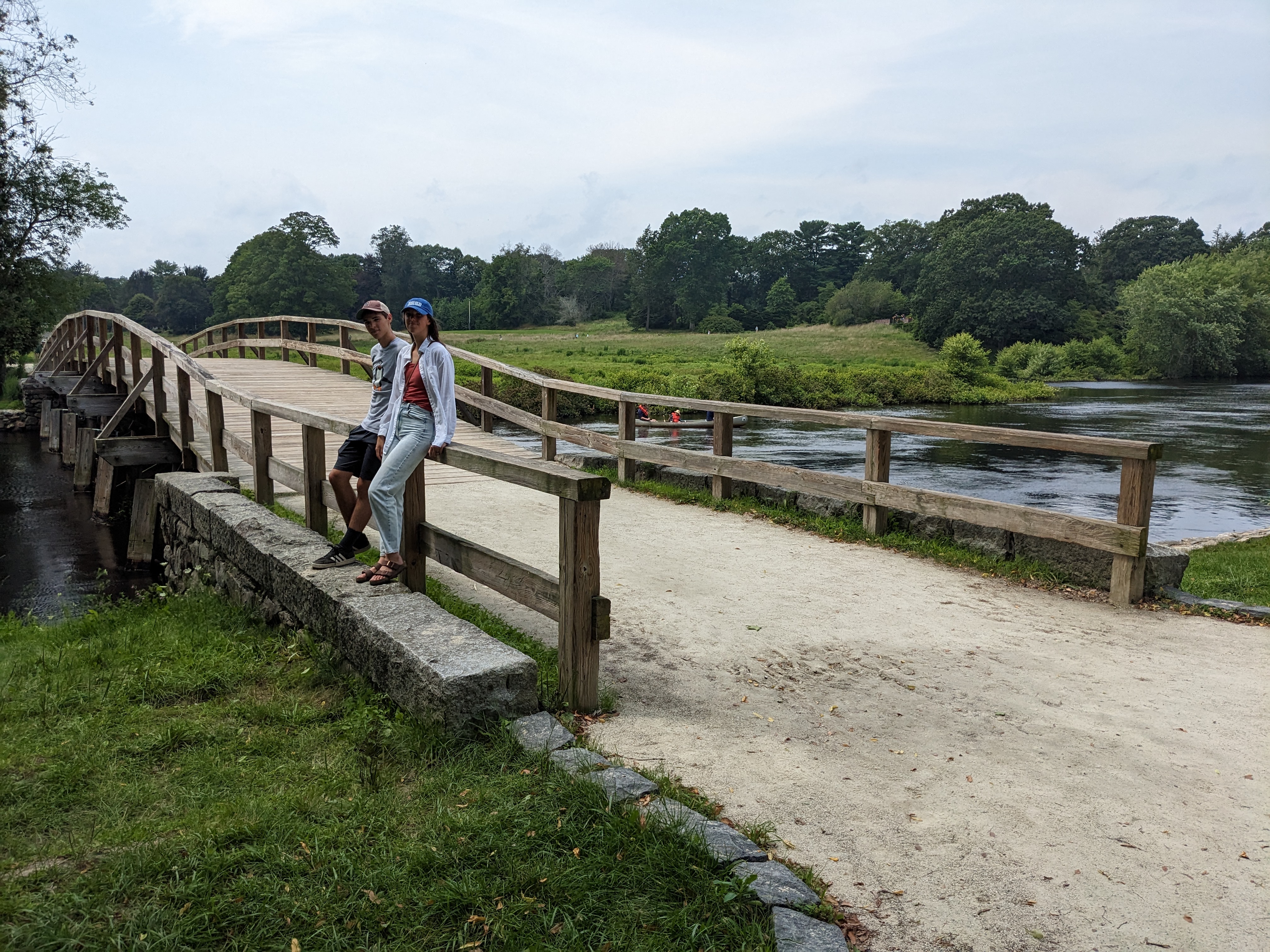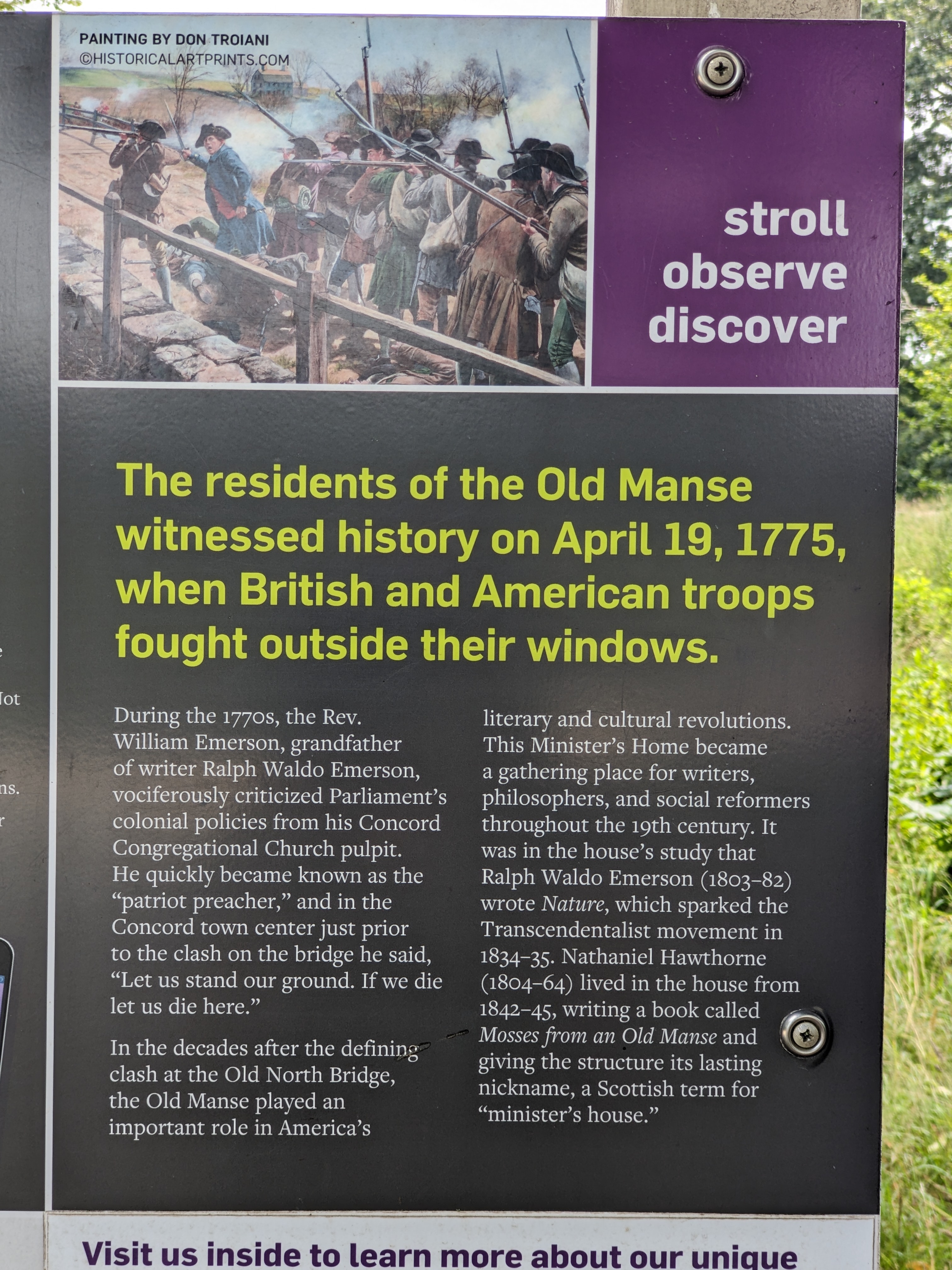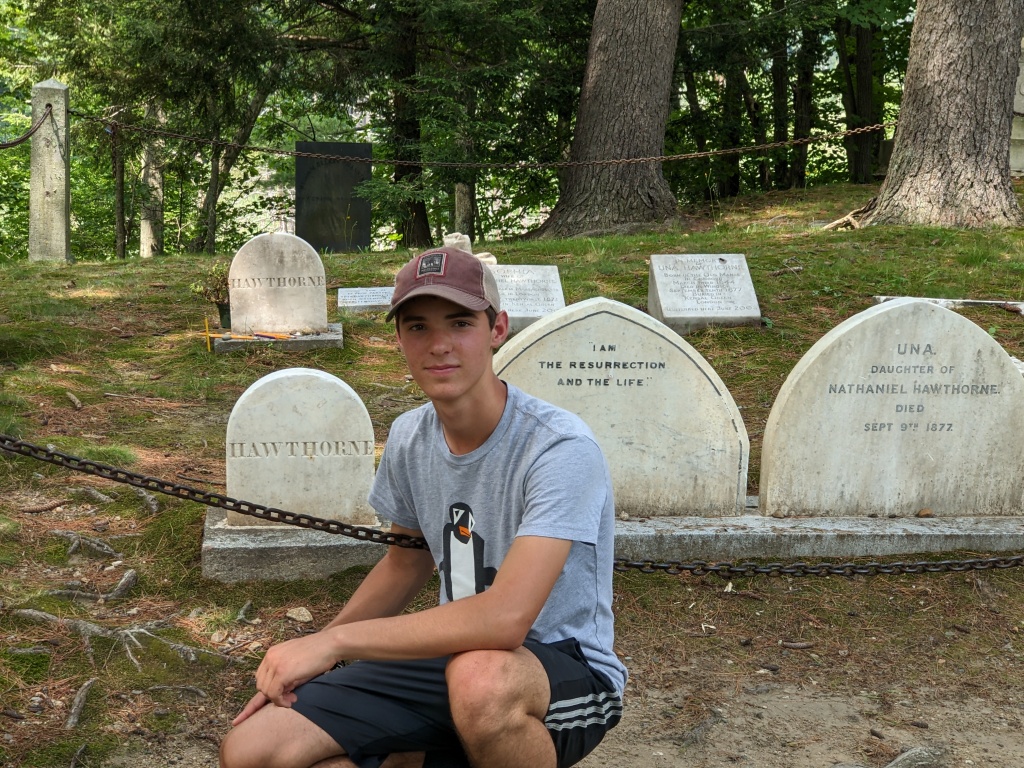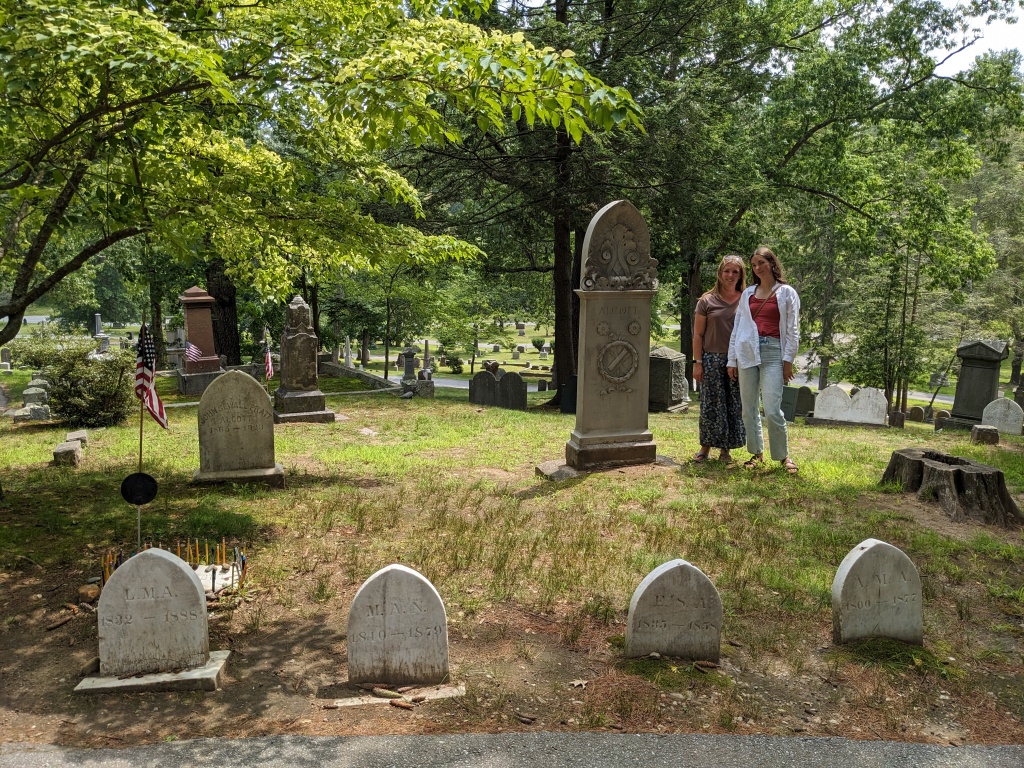John Adams Home
Between being a realtor and loving history, my most favorite thing to do in the world is tour historic homes. I was so looking forward to seeing John Adams homes.
One thing that came up multiple times while touring Boston… they will close down tours in historic sites if they think it’s too hot. So always schedule appointments for as early as you can get them in warm weather months. And keep in mind if its summer you might not be able to take the tour.
We had the earliest tour given that day. They let us tour the first and second home. But when we got to the third home they only let us see two rooms. It was really a bummer. But even with the limited tour we had, it was still wonderful.

We started at John Adams Birthplace. It is the oldest presidential birthplace in the United States. John Adams was born there in 1735.
It is only 75 feet away from his later home where John Quincy Adams was born. In this home John and Abigail started their family, launched his presidential career and maintained a law office. Samuel Adams and James Bowdoin also wrote the Massachusetts Constitution here, a document that greatly influenced the development of the United States Constitution.
The painting shows John Quincy’s birthplace on the left and John Adams birthplace on the right.

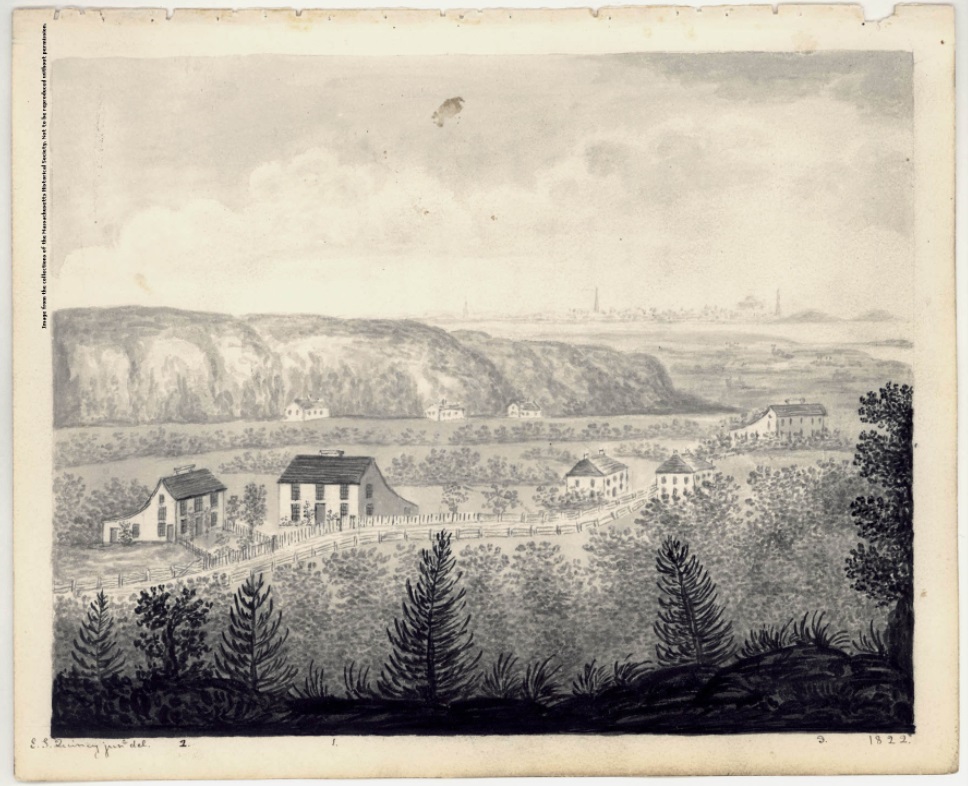
Eliza Susan Quincy painted this watercolor of the birthplaces of Presidents John Adams and John Quincy Adams in 1822 from the vantage point of Penn’s Hill in Quincy, Massachusetts
Then we all drove our own cars to meet up at the Old House at Peace field. This was built in 1731 and became the residence of the Adams family for four generations. It was the home to Presidents John Adams, John Quincy Adams (son) and their wives, the Civil War Minister to Great Britain Charles Francis Adams, and the literary historians Henry and Brook Adams.

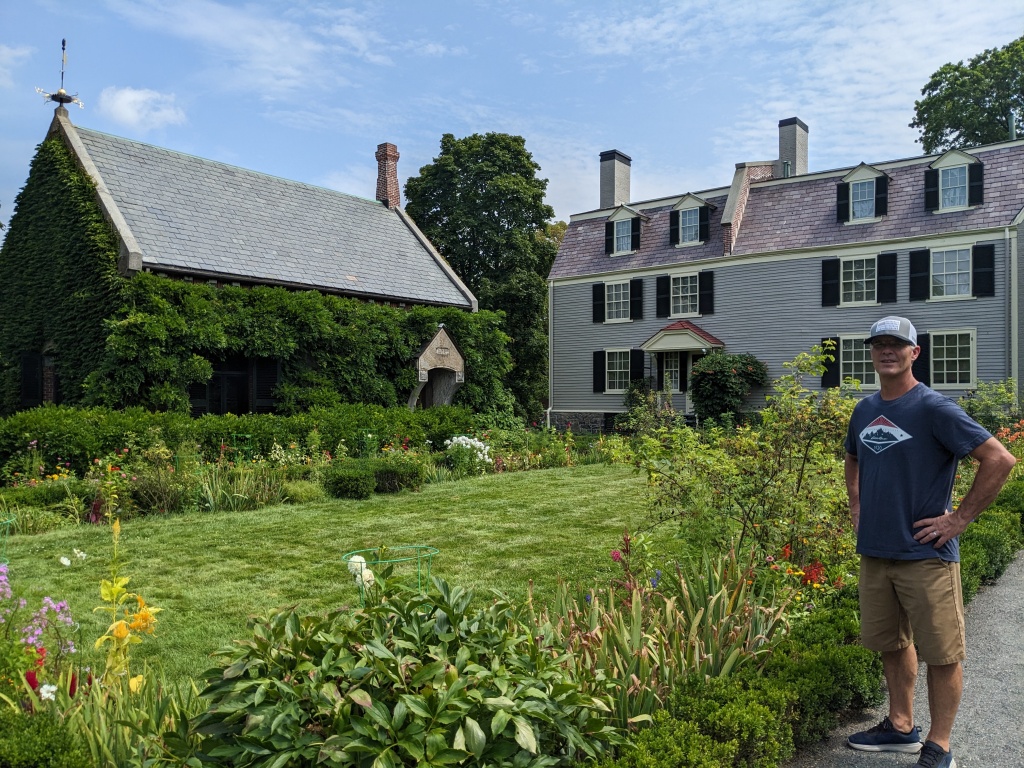
In the photos above the photo with two buildings shows the home (on the right side) and the Adams library covered in ivy on the left.
The absolute highlight was the Stone Library built in 1873 that is next to the Old House. It contains more than 12,000 books that belonged to the Adams family. About 10% of the book belonged to John Adams and the greater part belonged to his son John Quincy Adams.
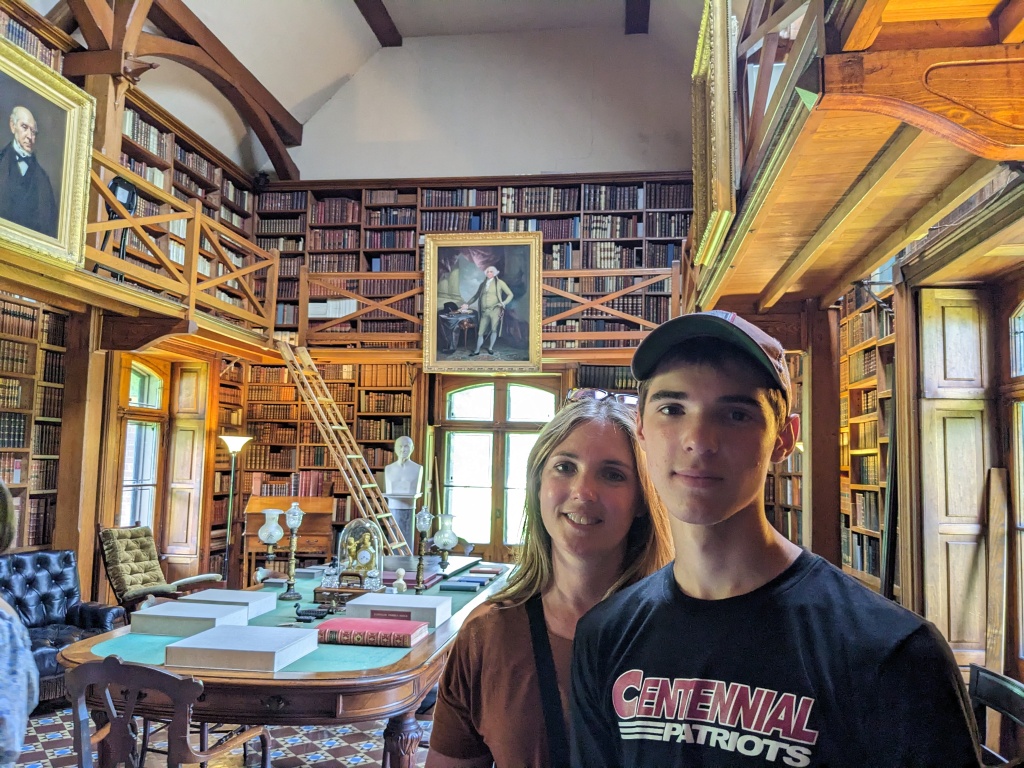
In John Quincy Adams will, he gave his son his books and asked that he build a fireproof library to hold his books, documents and manuscripts. And Charles Francis Adams built this medieval style Stone Library to fulfill his father’s wishes. Many famous Adams writings were done here including the ten volume Diary of John Adams, the twelve volume The Memoirs of John Quincy Adams and The Letters of Abigail Adams, and The History of the Unites States written by Henry Adams.
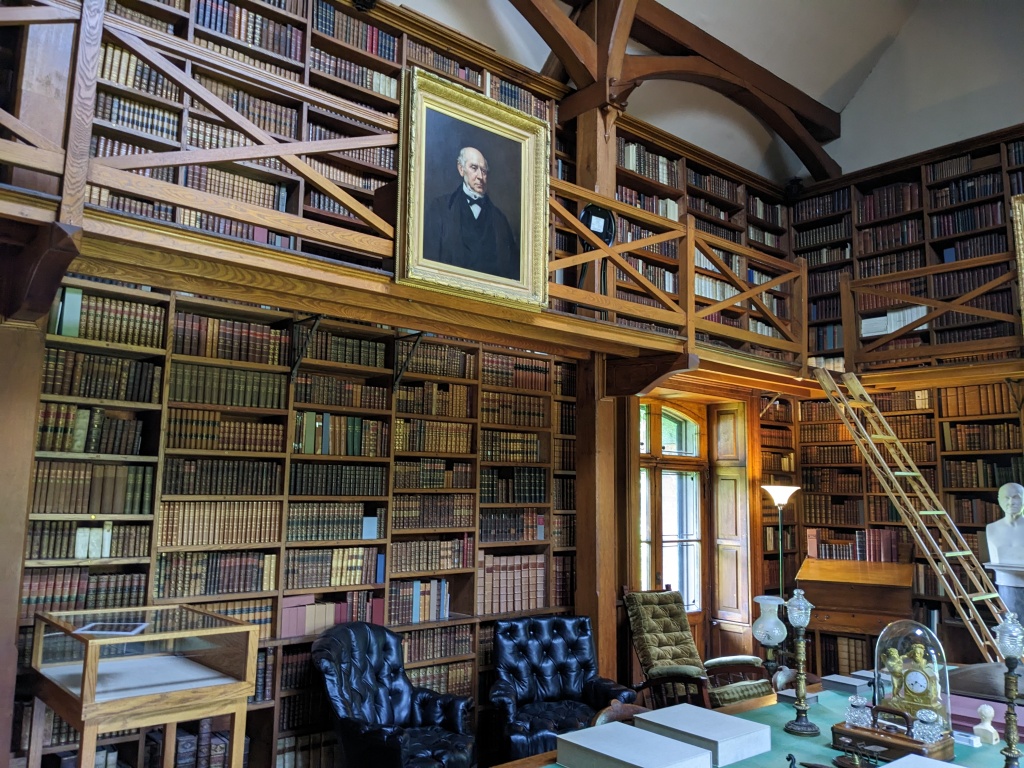
John and John Quincy Adams weren’t the only family members who loved collecting books. John Quincy’s son Charles Francis also had an extensive collection of books from all across the world. One I learned about after our visit… is a rare copy of the Book of Mormon. In 1844, Charles Francis Adams and his cousin Josiah Quincy, Jr. were touring the country, when they came to Nauvoo, Illinois. While there they met with Joseph Smith, the prophet of the Church of Jesus Christ of Latter-day Saints. Following the visit, Joseph Smith signed a copy of the Book of Mormon and gave it to Charles Francis Adams (grandson to John Adams, and son to John Quincy Adams). Apparently he didn’t have a spare copy on hand. The Book of Mormon that the Adams brought home was Joseph’s wife’s copy, with her name engraved on it.
This library was a treasure to visit. It’s one of the best preserved personal libraries I’ve seen.
And such a wonderful way to end our time in the Boston area.
New York City
Last time we were in New York City with the kids was July 2012. That would make Hannah and Ben six and seven years old. They don’t remember much from that trip. We got to New York and parked our car at Citi field (where we would be going to a baseball game later that night). We had just a couple hours to catch the subway in to New York and walk the city and get back. It wasn’t much time, and the kids told us later it was too fast : ) But it was the best we could do to say they ‘saw’ the city and still make it to the game.
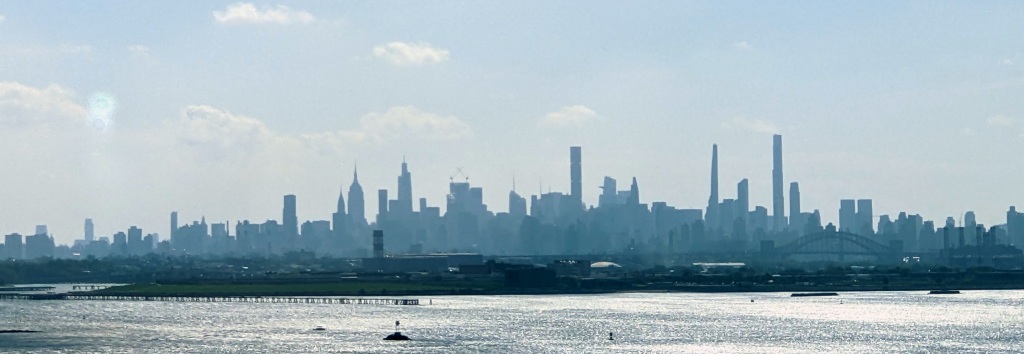
Our view driving in to New York City.
Our first stop was the New York City Temple. It was closed when we were there, so we settled for photographs outside. Unlike most temples built by the Church of Jesus Christ of Latter-day Saints, with spires and manicured lawns and gardens, the temple in NYC is on four floors of a renovated six-story building in the middle of New York City. As you walk through, you can hear virtually nothing from the outside, an unusual sound in NYC. The architects used soundproofing techniques to block distracting noise. It’s pretty incredible to come in from the outside noisy city, and just hear silence and feel peace.
After the temple we walked through Central Park. One of my strongest memories of walking through Central Park eleven years ago was 6 year old Ben, who was mesmerized by street dancers and acrobats. He’s always been our gymnast since he was very little, teaching himself to do backflips and front hand springs. He couldn’t believe people could do tricks like that in a park and get paid (he saw the jar for donations : ) It was all we could do to keep him from jumping into the act. Fun memories. This time it was a little less eventful.
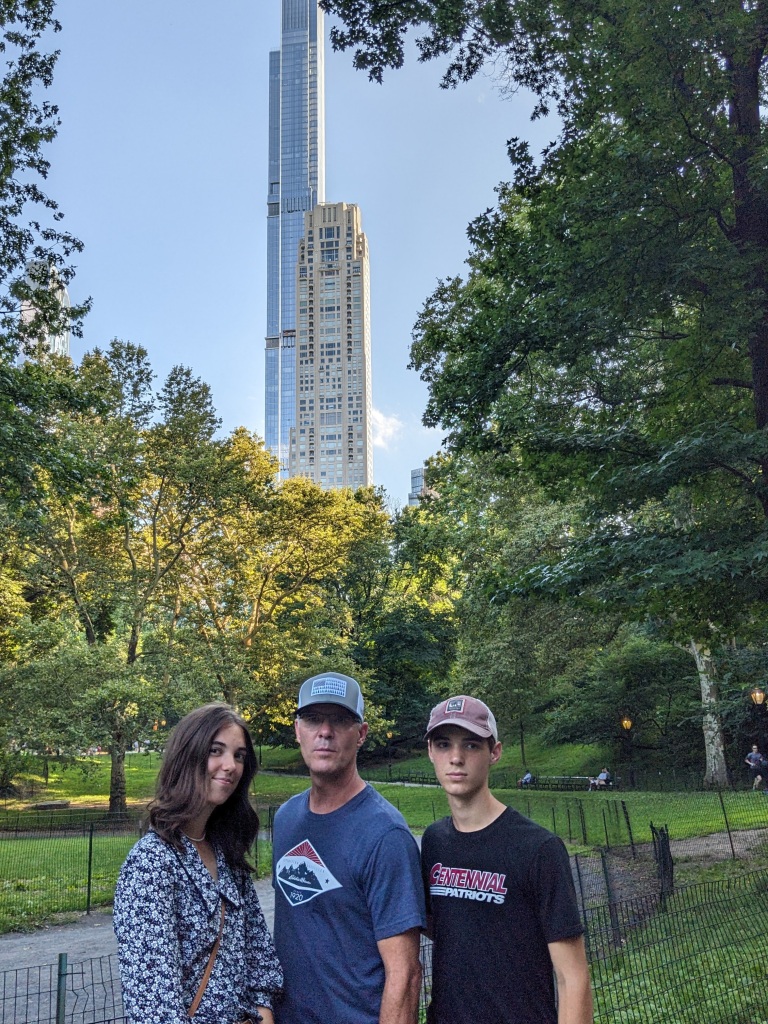

The kids biggest complaint was that NYC was rushed. We just hadn’t really planned on that part of the trip, this trip was more about Boston, and NYC was incidental to Mike and I. So we walked through New York very quickly looking at the sites. Some places we passed, the Late Show theater, Broadway, Radio City Music Hall, the Empire State Bldg, the Town Hall and Times Square.
One building we passed that I didn’t remember seeing before was The Town Hall. I had to look it up when I got home. It was founded as a pro-women’s suffrage group, the League initially fought for passage of the Nineteenth Amendment to the United States Constitution and provided general education on social and political issues.

It is now used as a performance hall in the Theater District of Midtown Manhattan in New York City. It was built in 1919 for the League for Political Education. The auditorium has historically been used for various events, such as speeches, musical recitals, concerts, and film screenings. Both the exterior and interior of the building are New York City landmarks, and the building is on the National Register of Historic Places as a National Historic Landmark.
Mets Game and home
We walked from the Temple to Empire State Bldg, to Times Square, and then caught a subway to go to the Mets-Nationals game. The game started late because of rain, which was a blessing for us since we were running late from NYC. It was a brutal game, Mets fans aren’t nice to even there own players : ( but a fun memory, since on our last US history trip we went to a Nationals game with our cousins in Washington DC.
Going Home
I’m so glad we were able to make this trip. I loved Boston. I’m bummed we weren’t able to fit it in with our older children’s trip, but you can’t always do everything : ) I’m glad we got back there with Hannah and Ben and had that time together. Fun, fun memories. So glad we got to do it before they left home.

